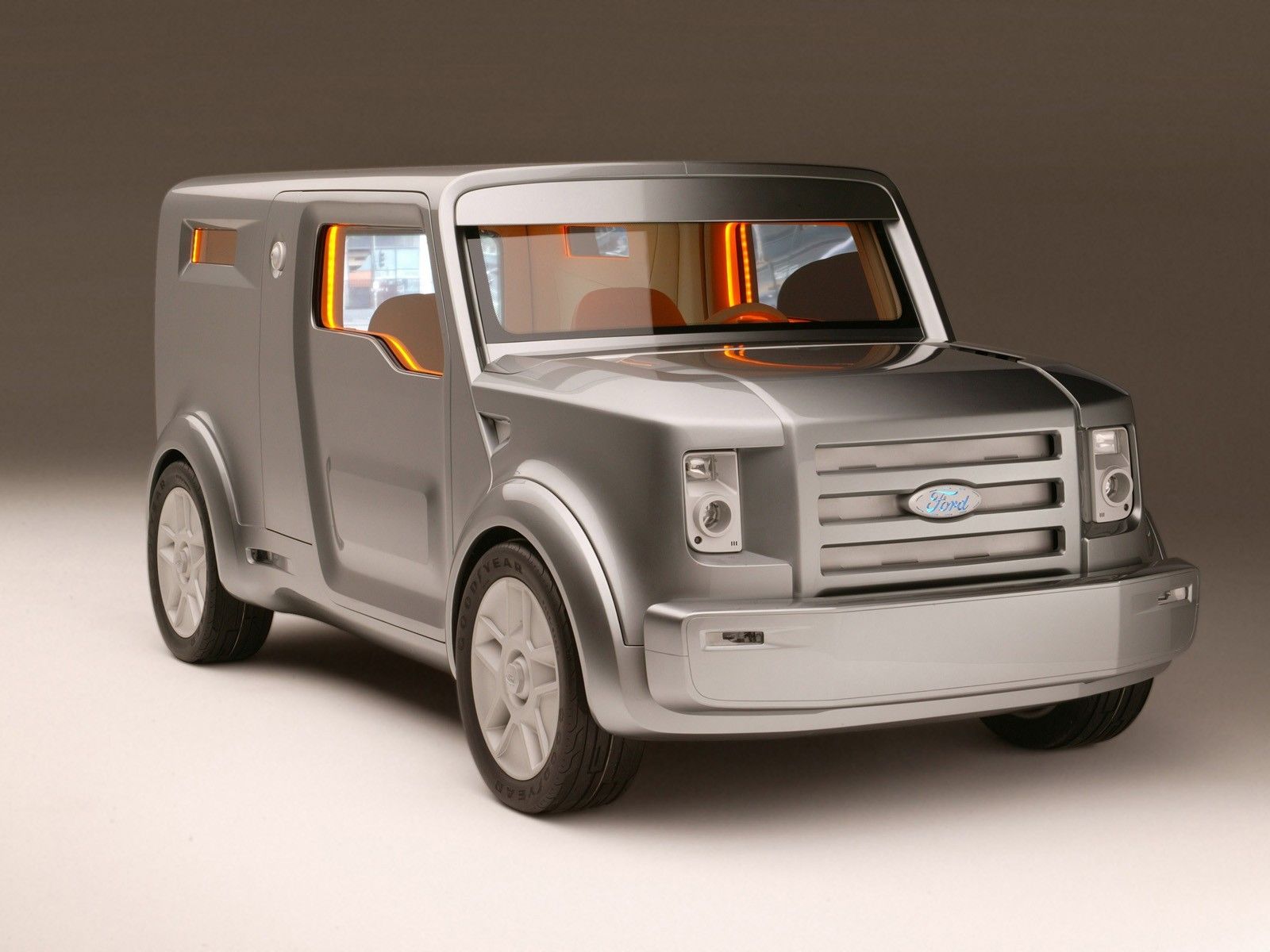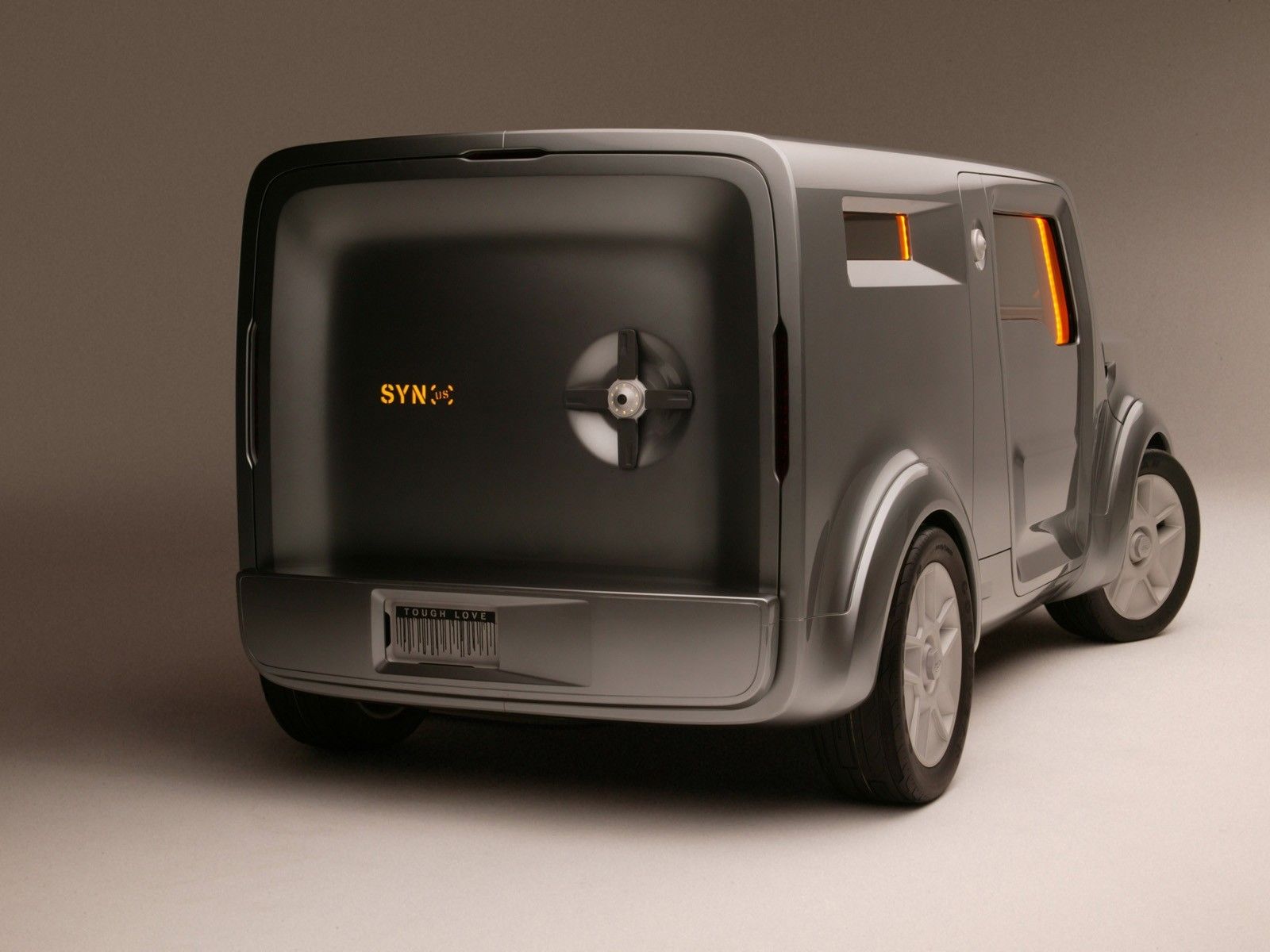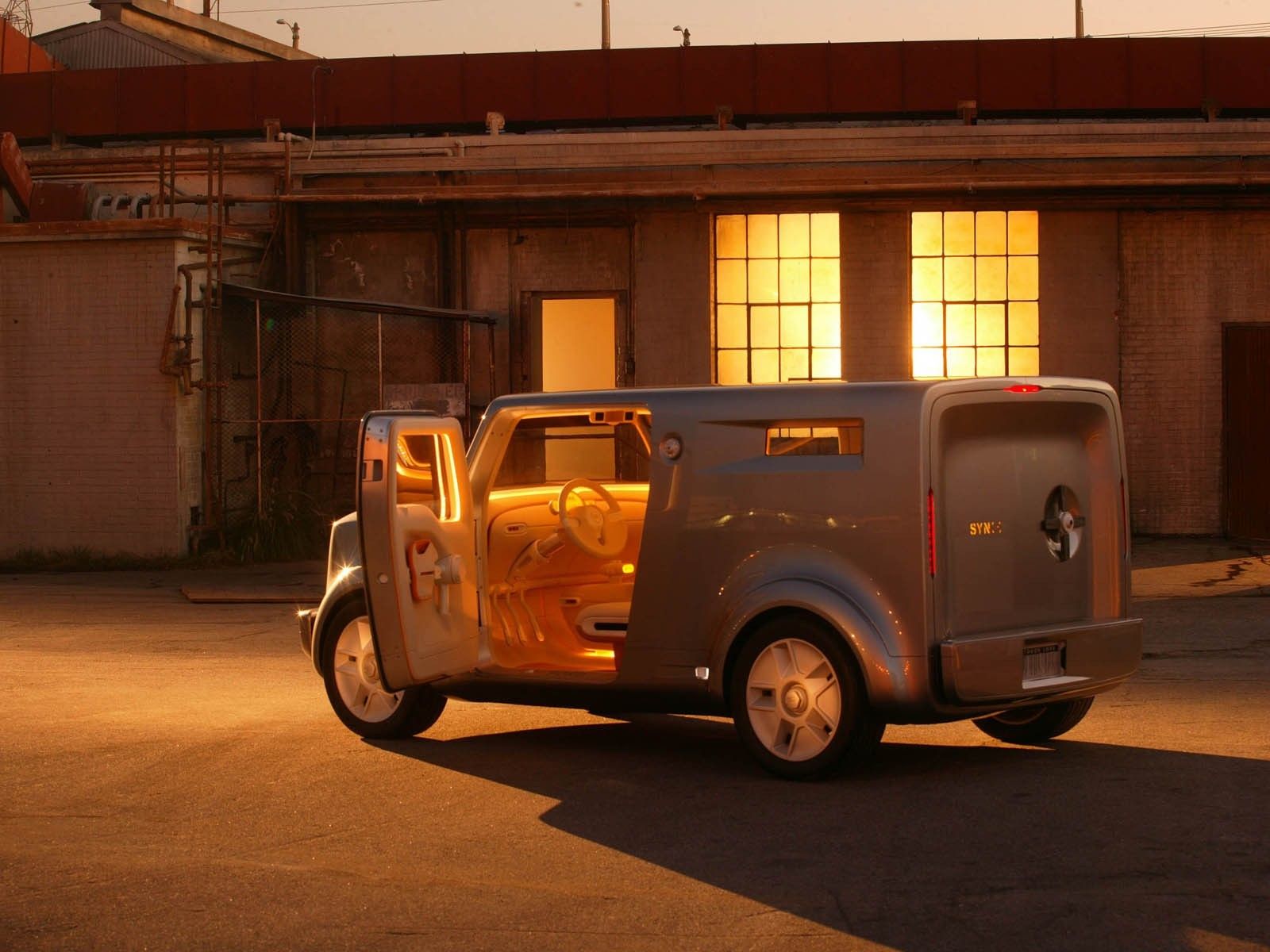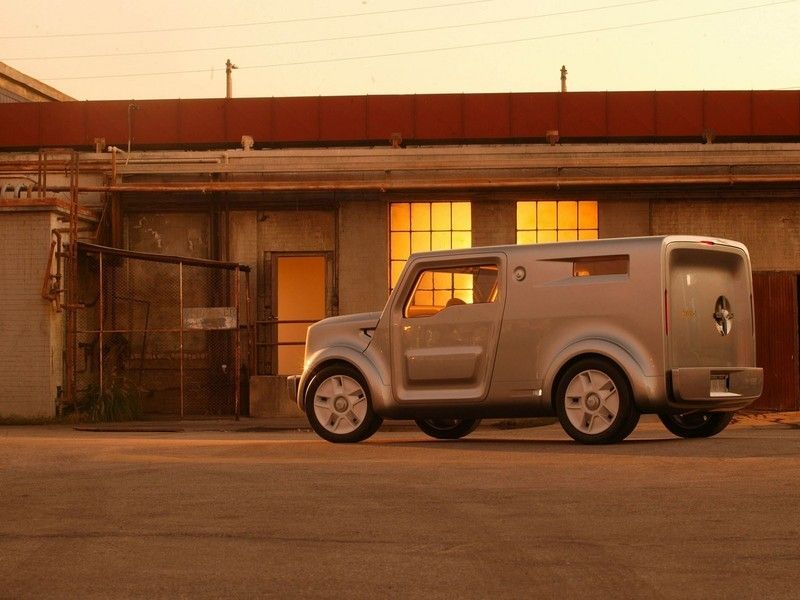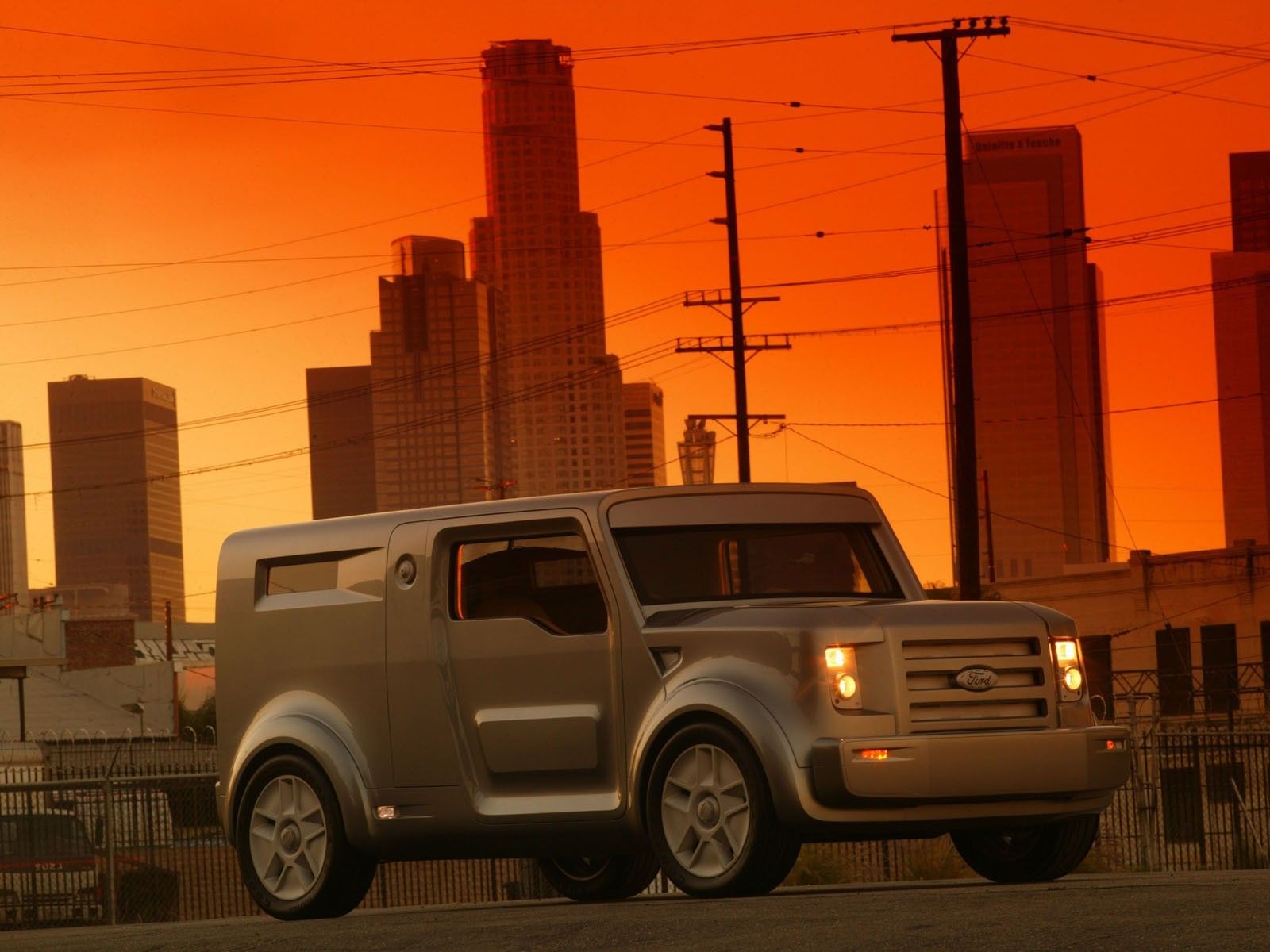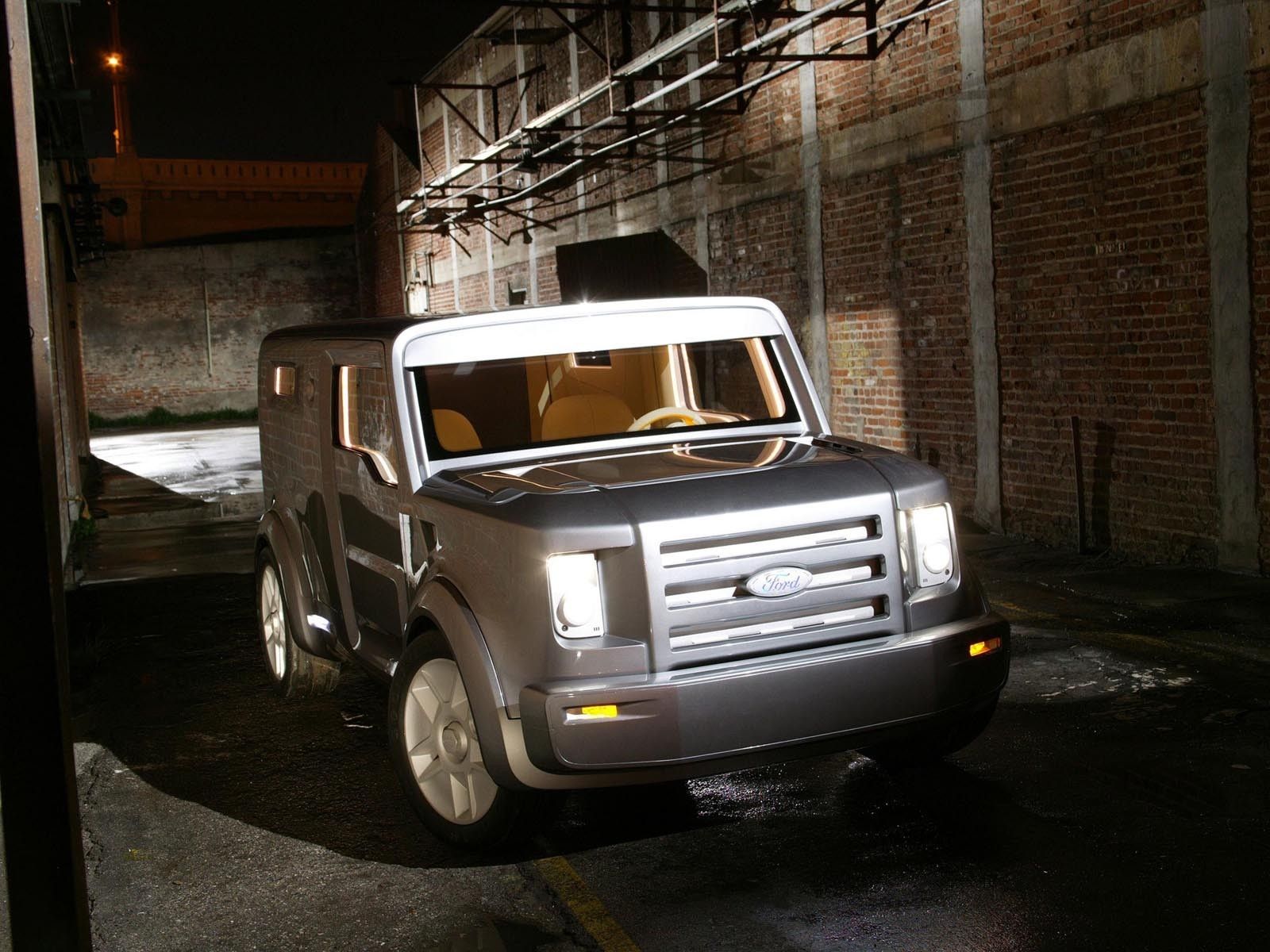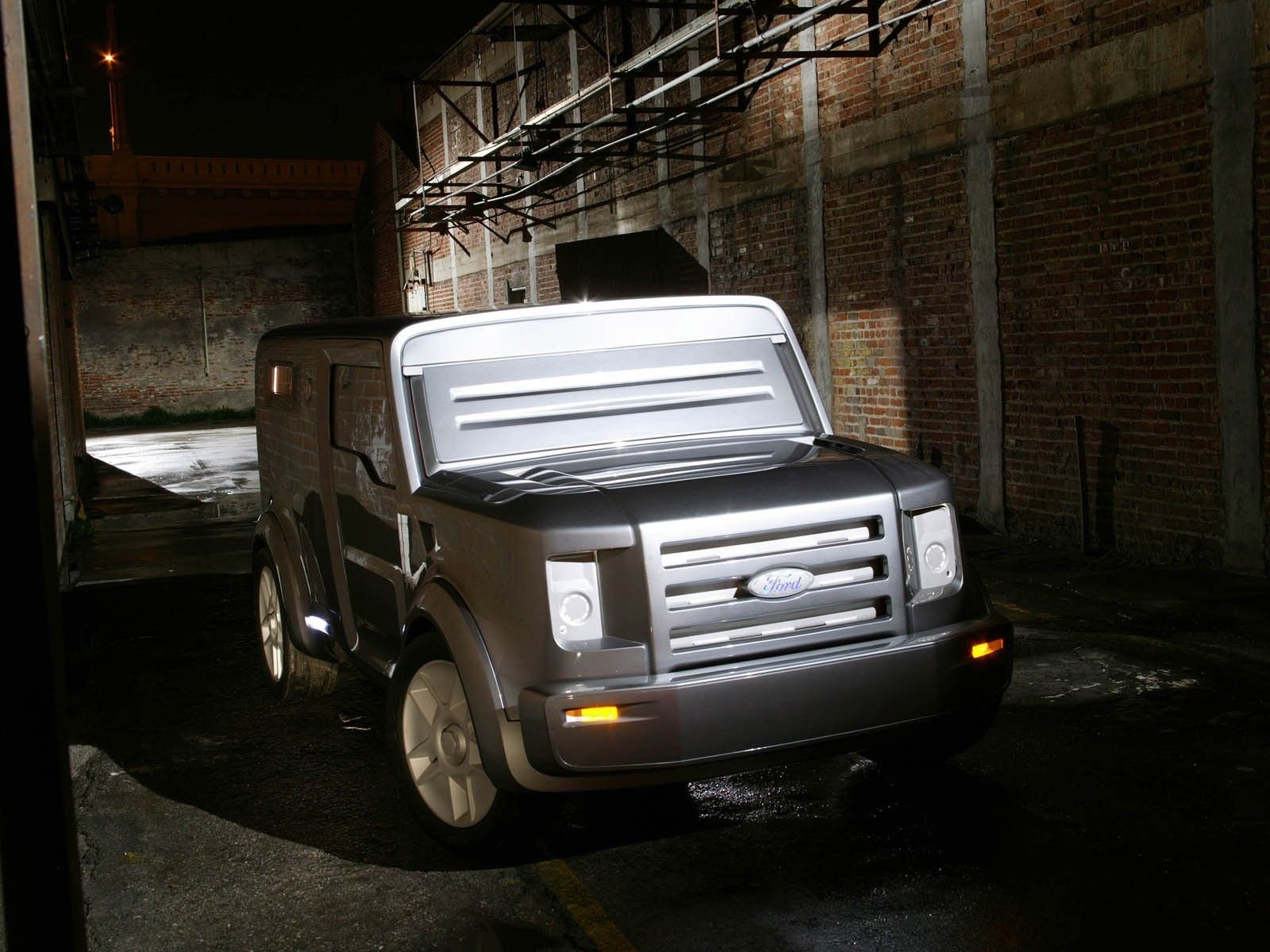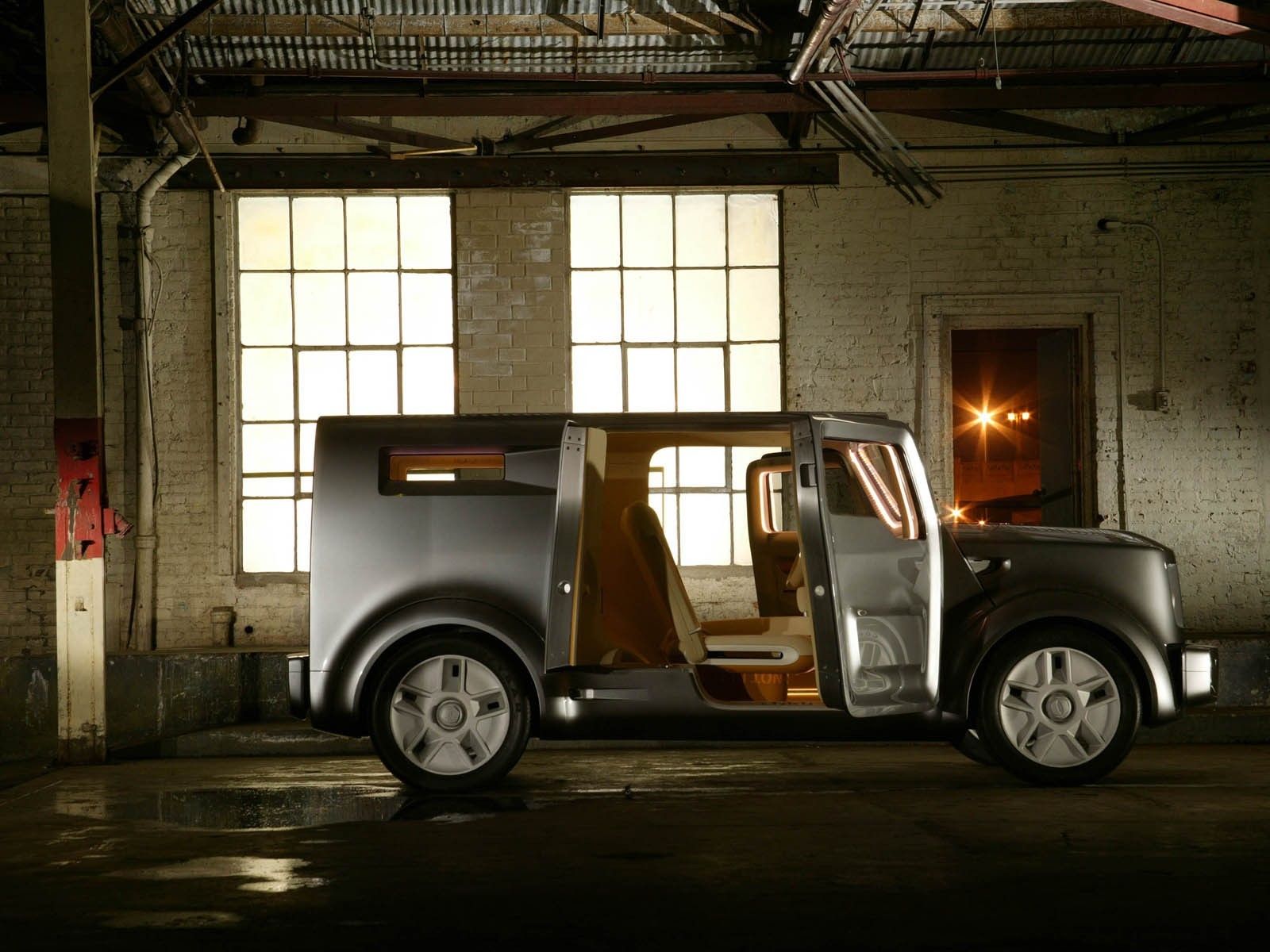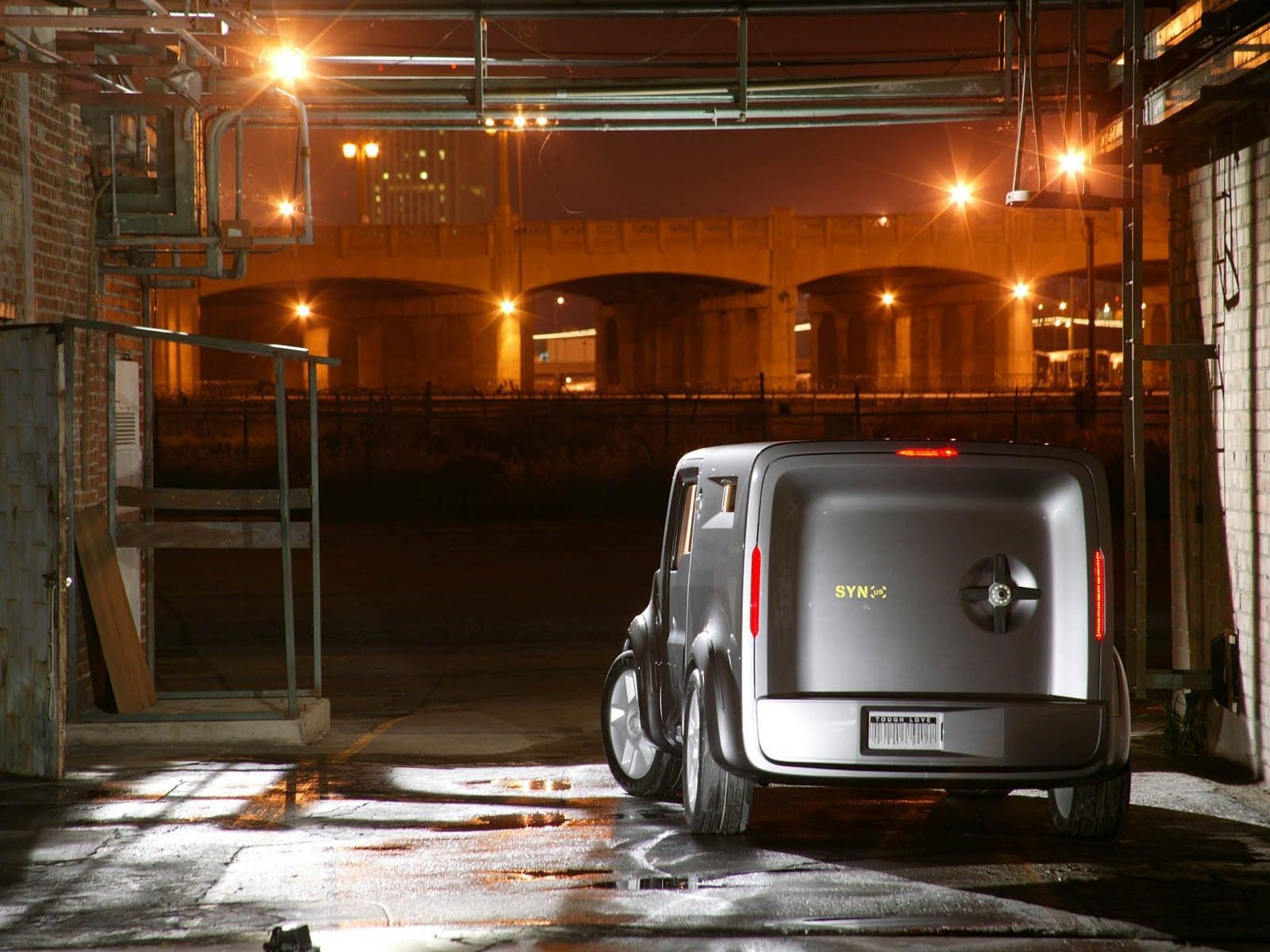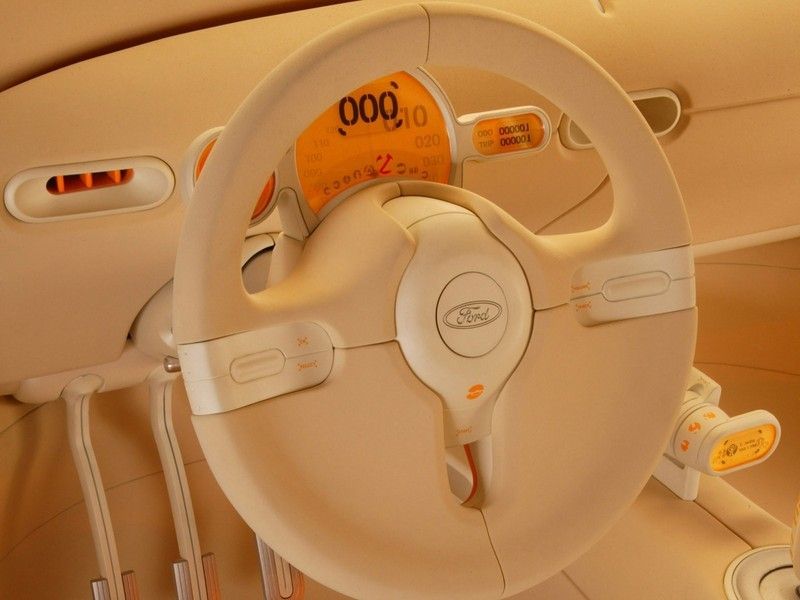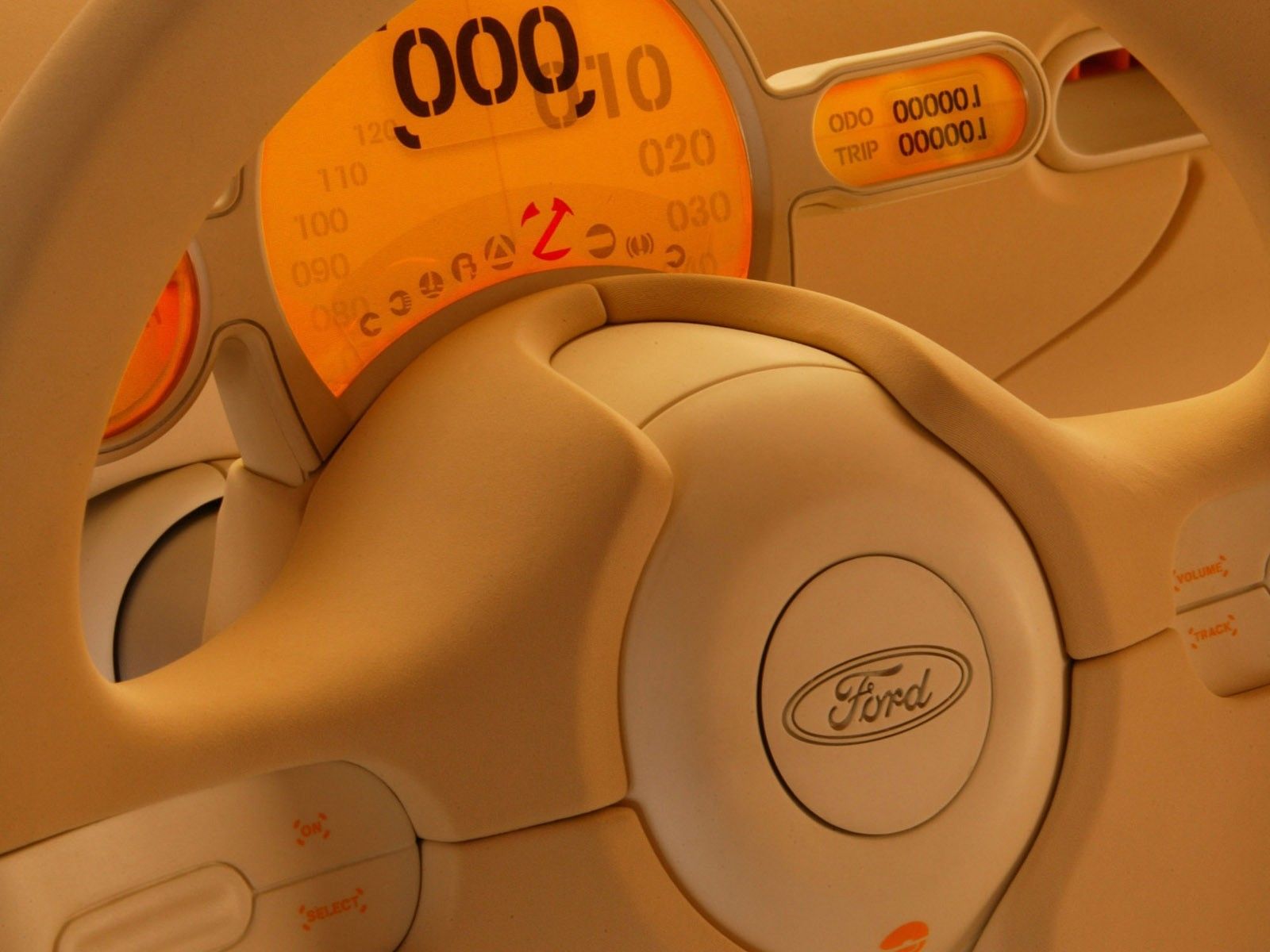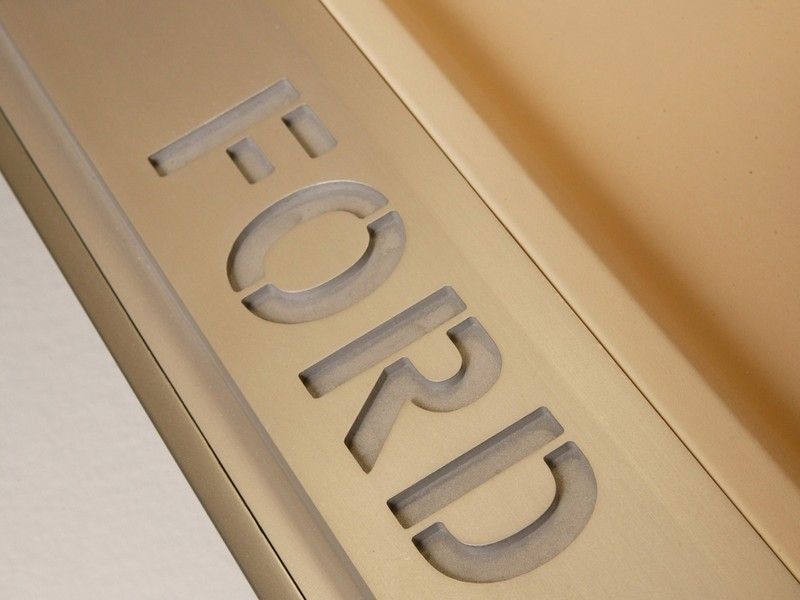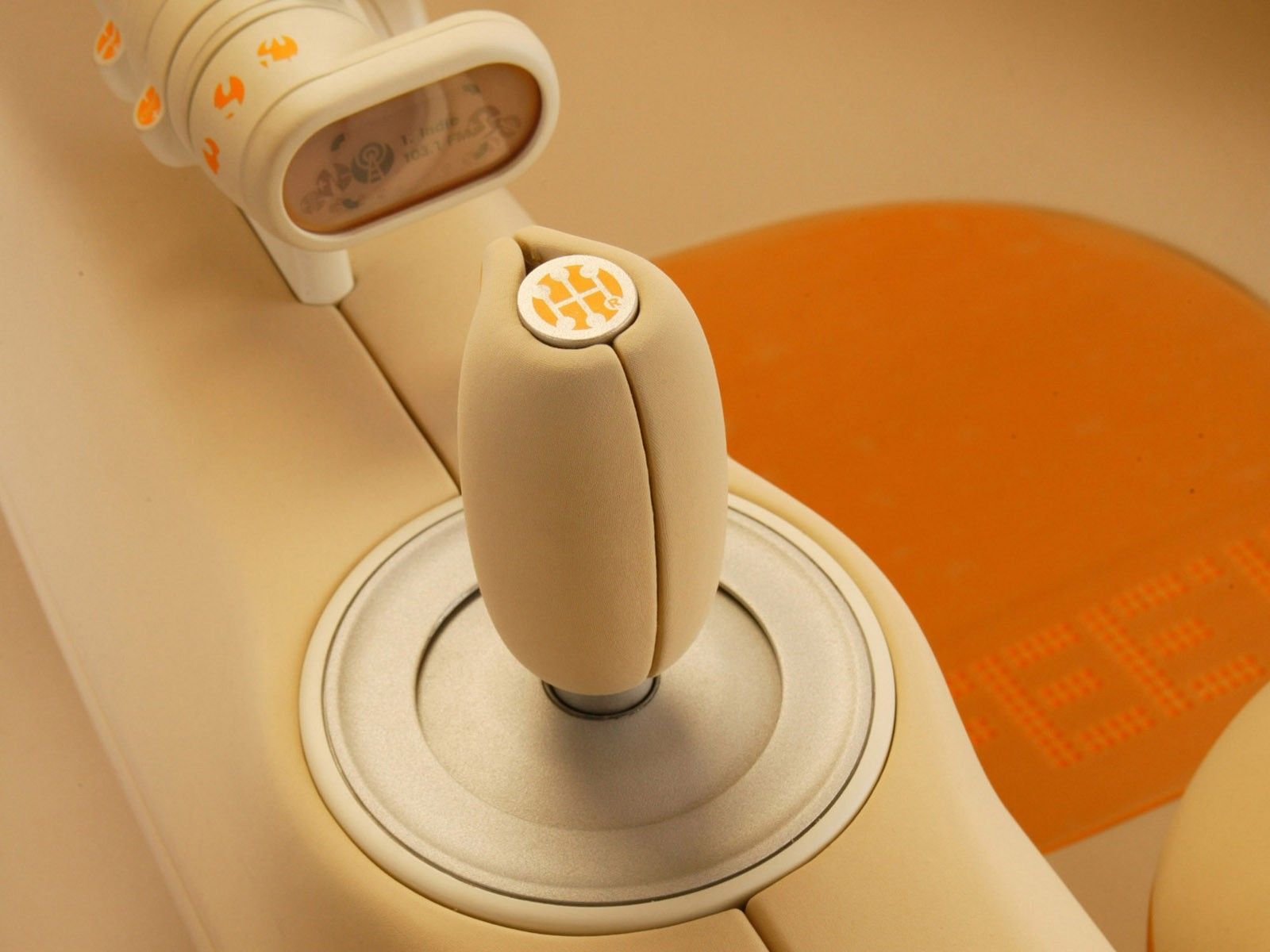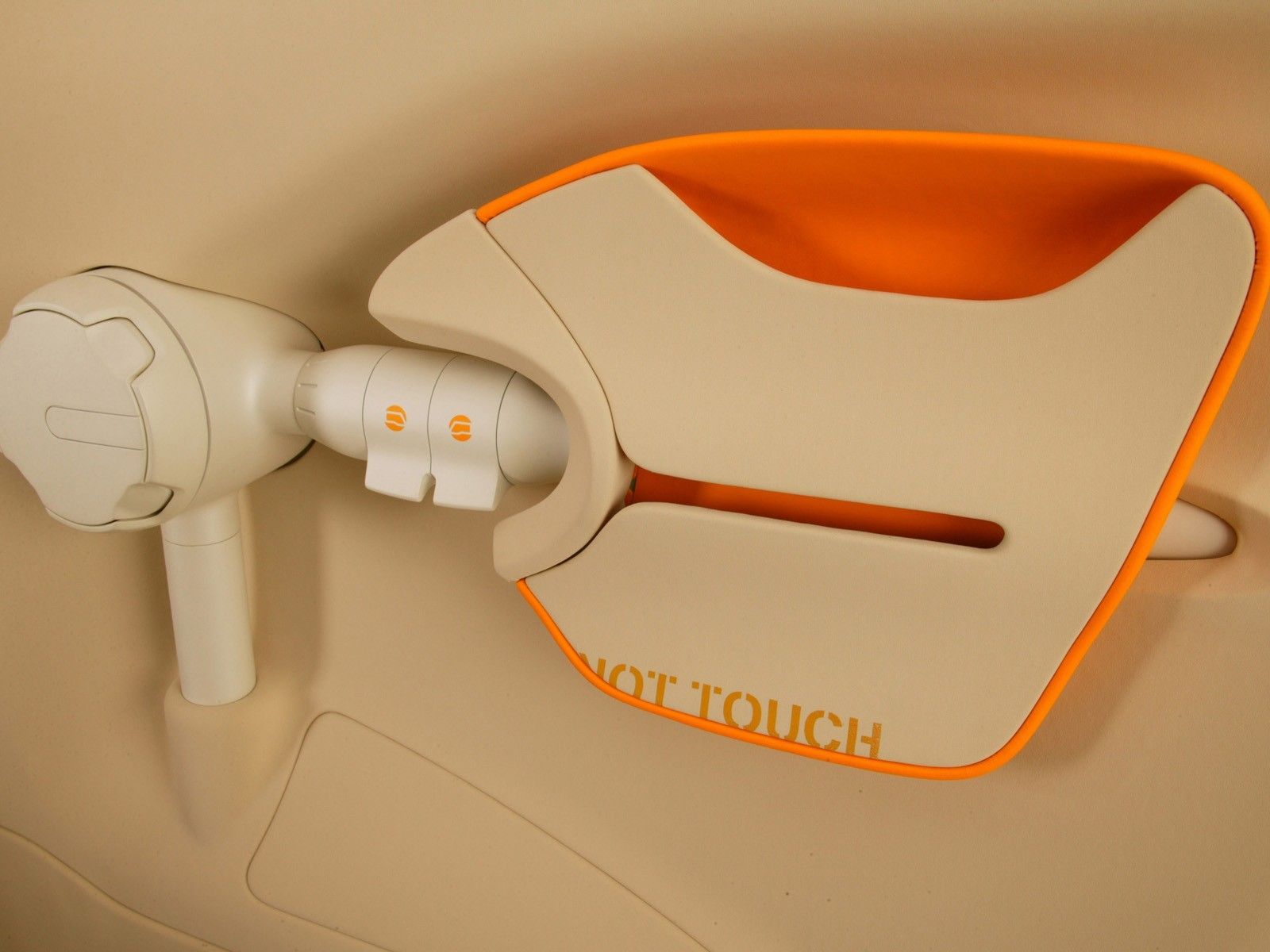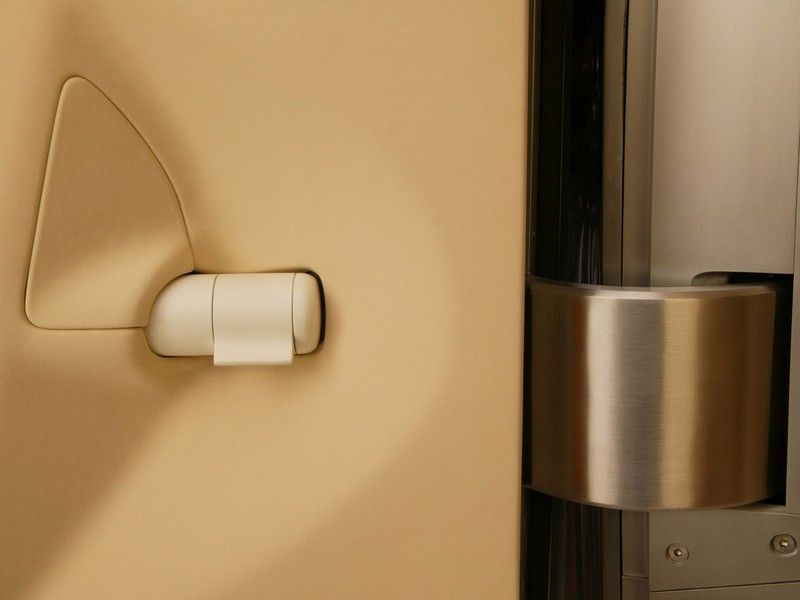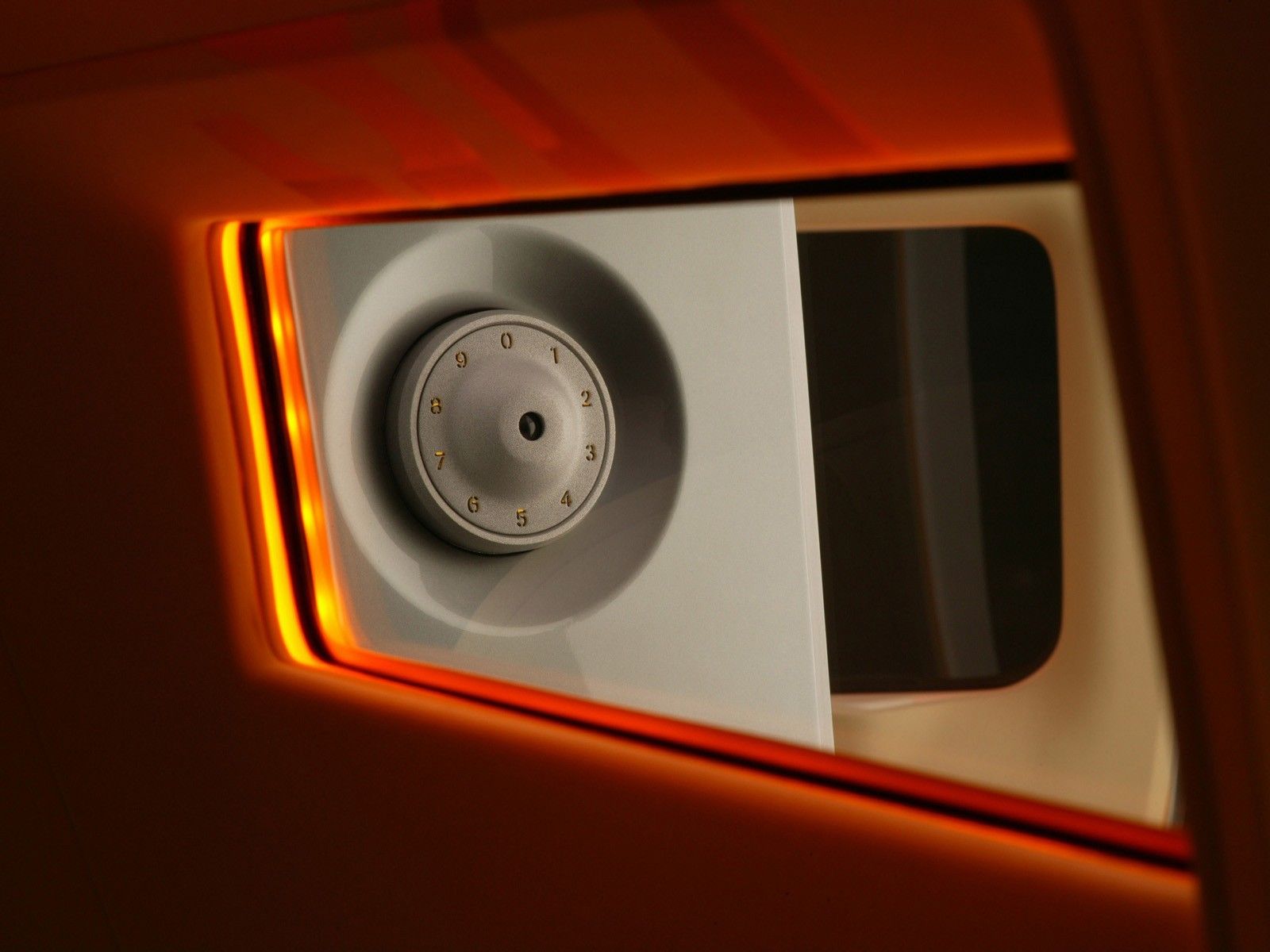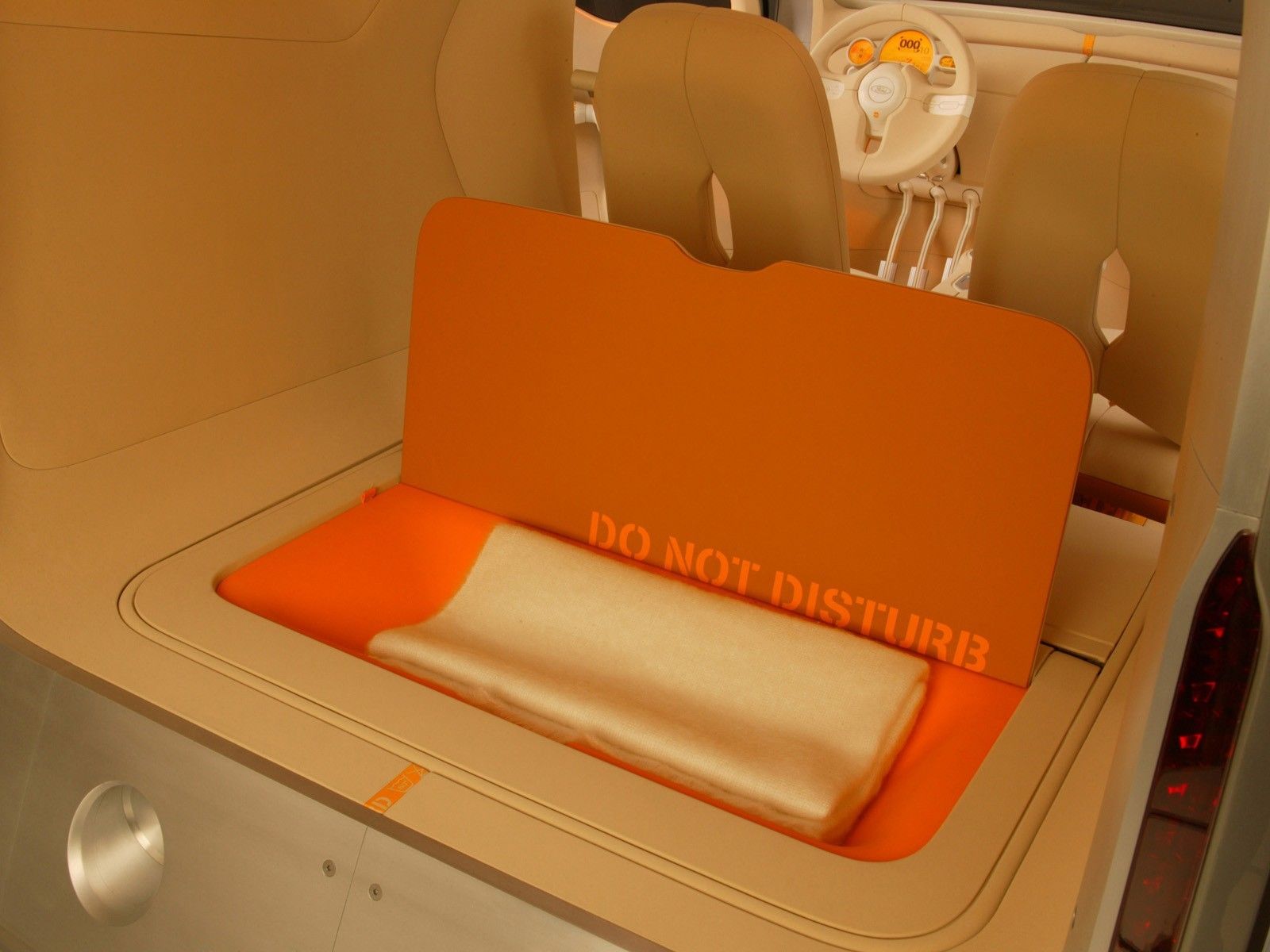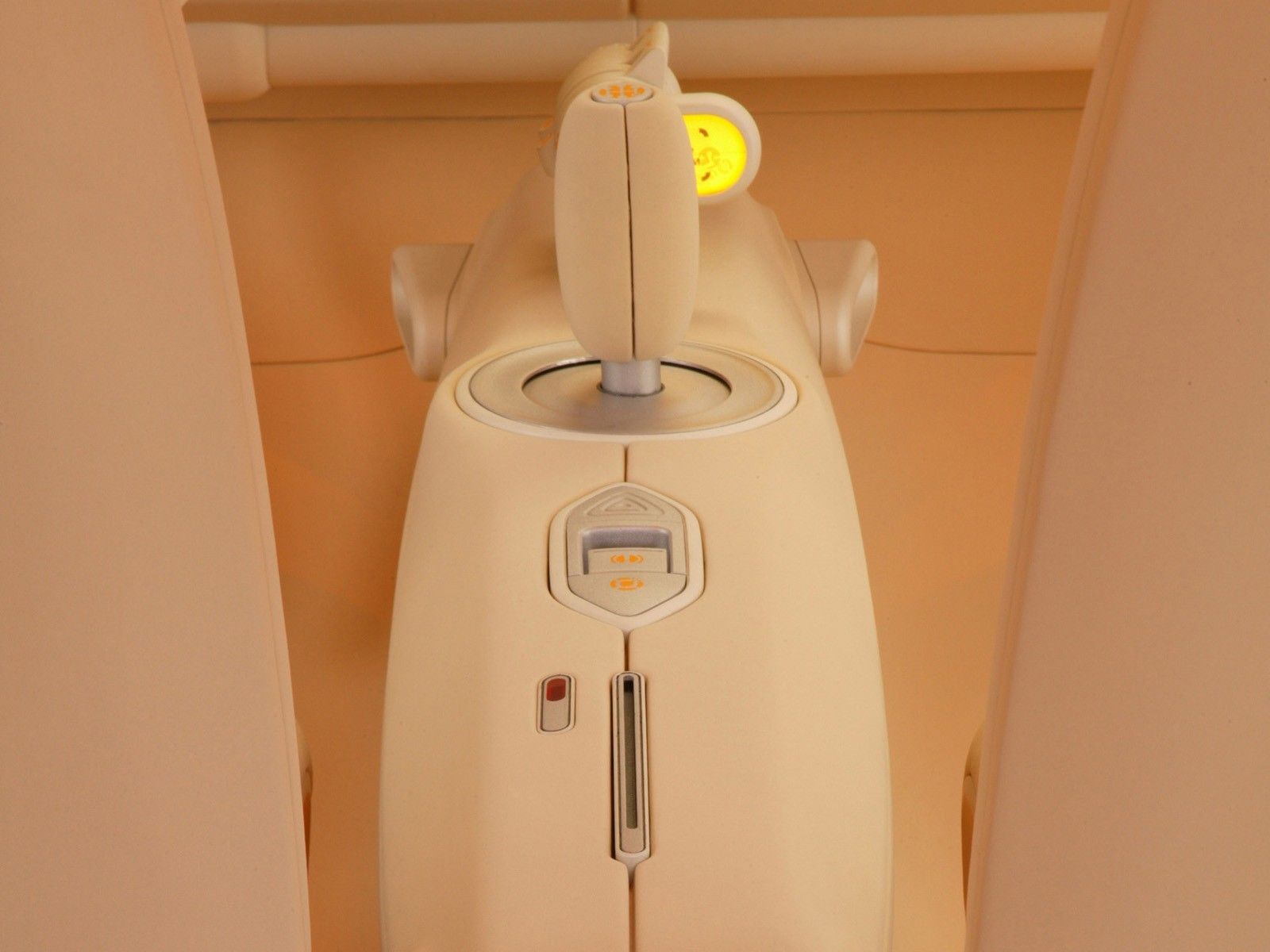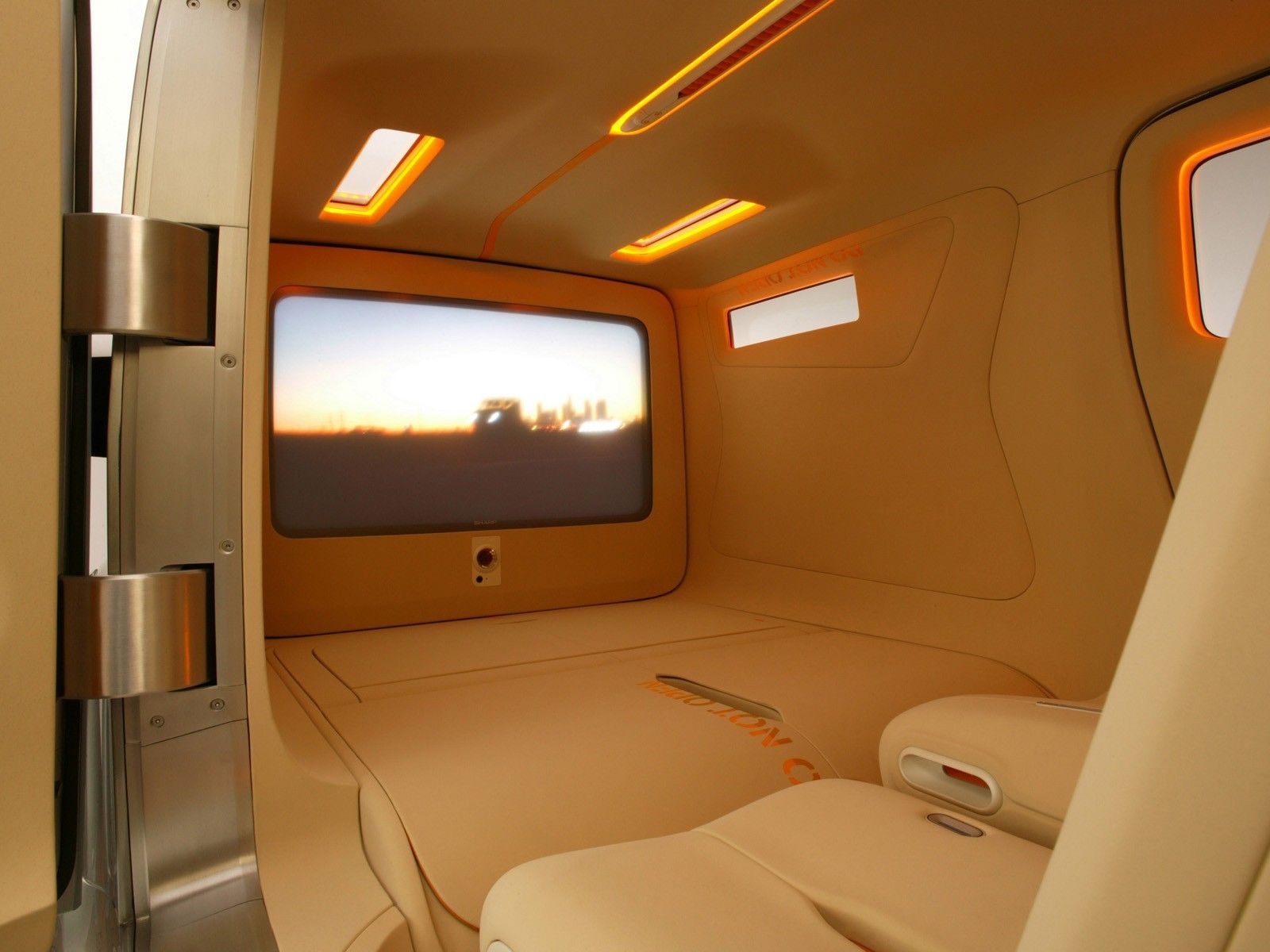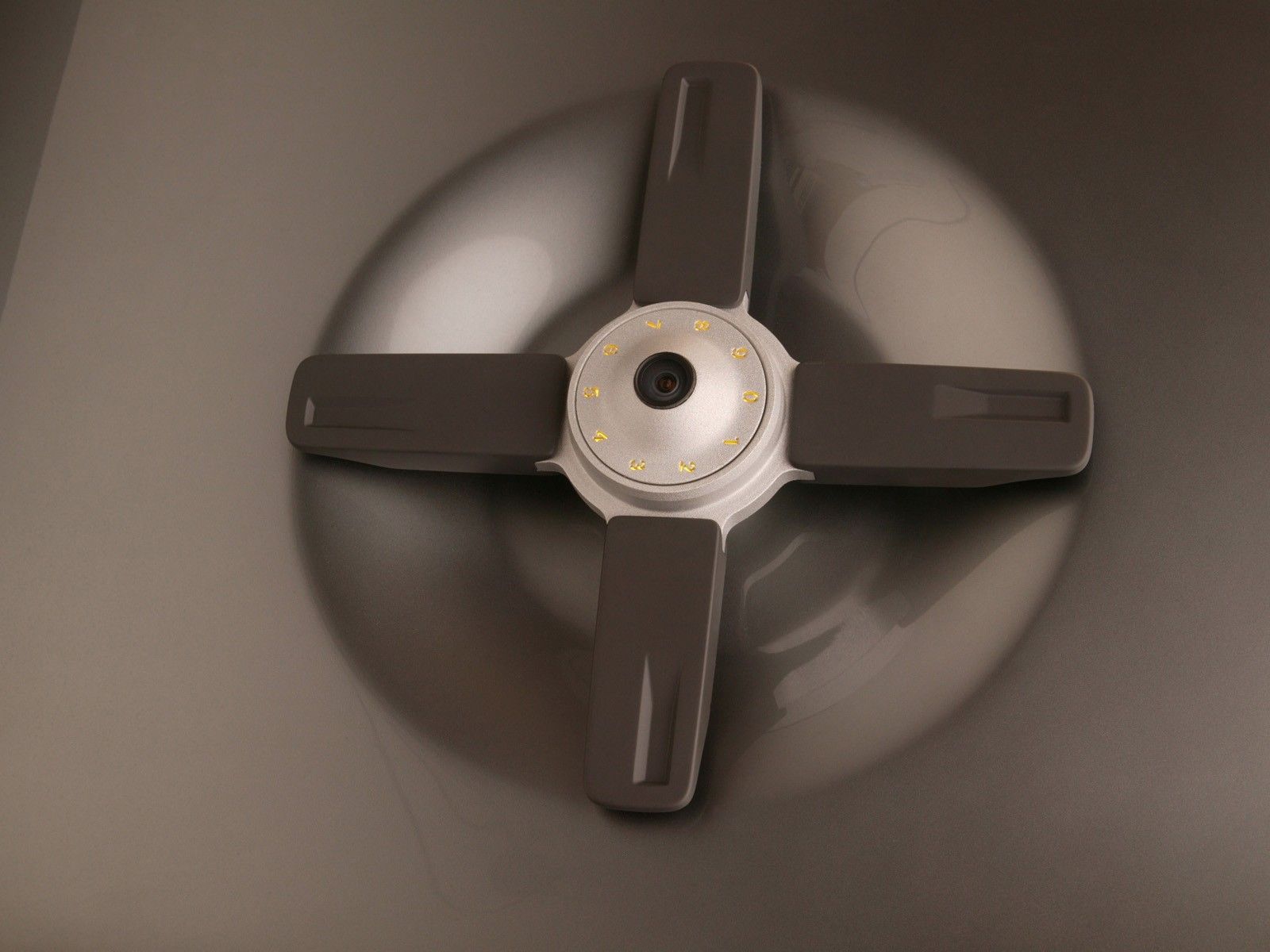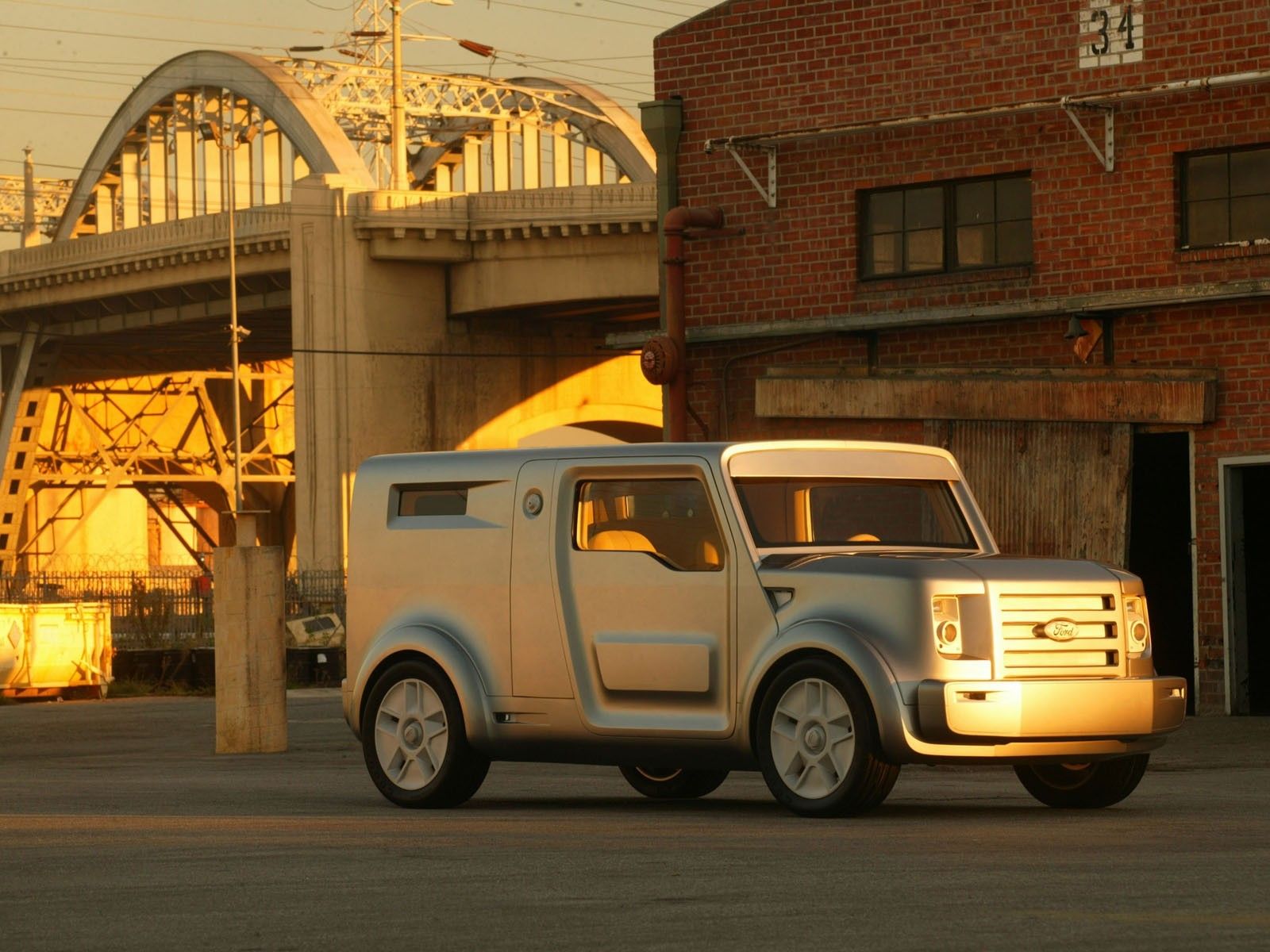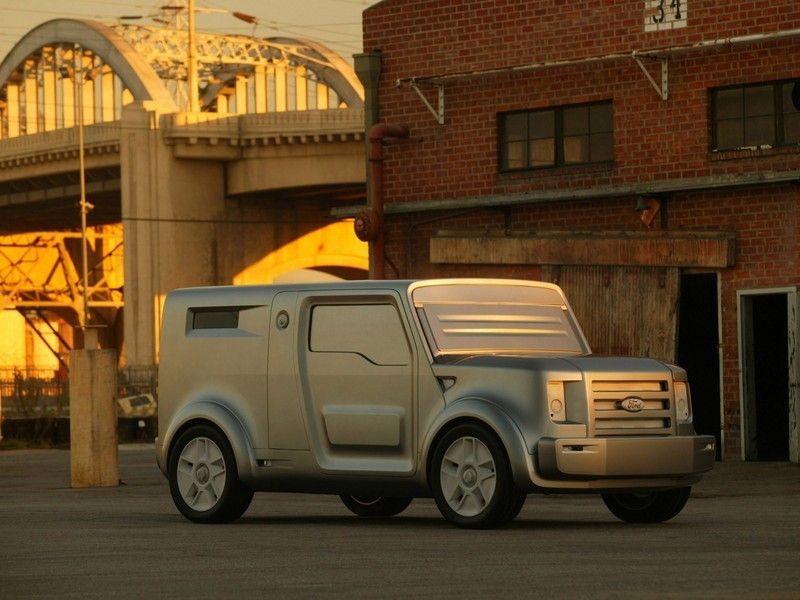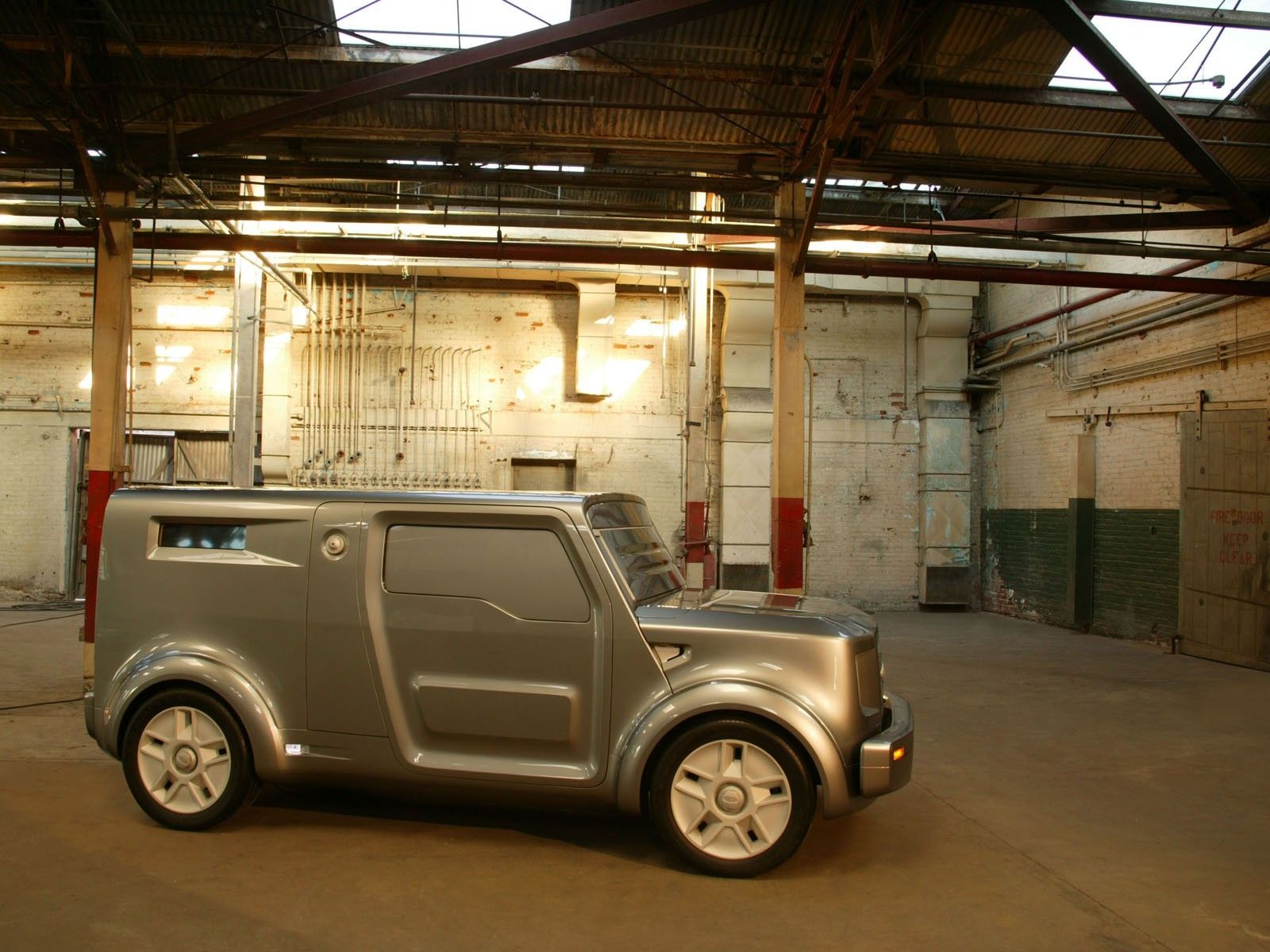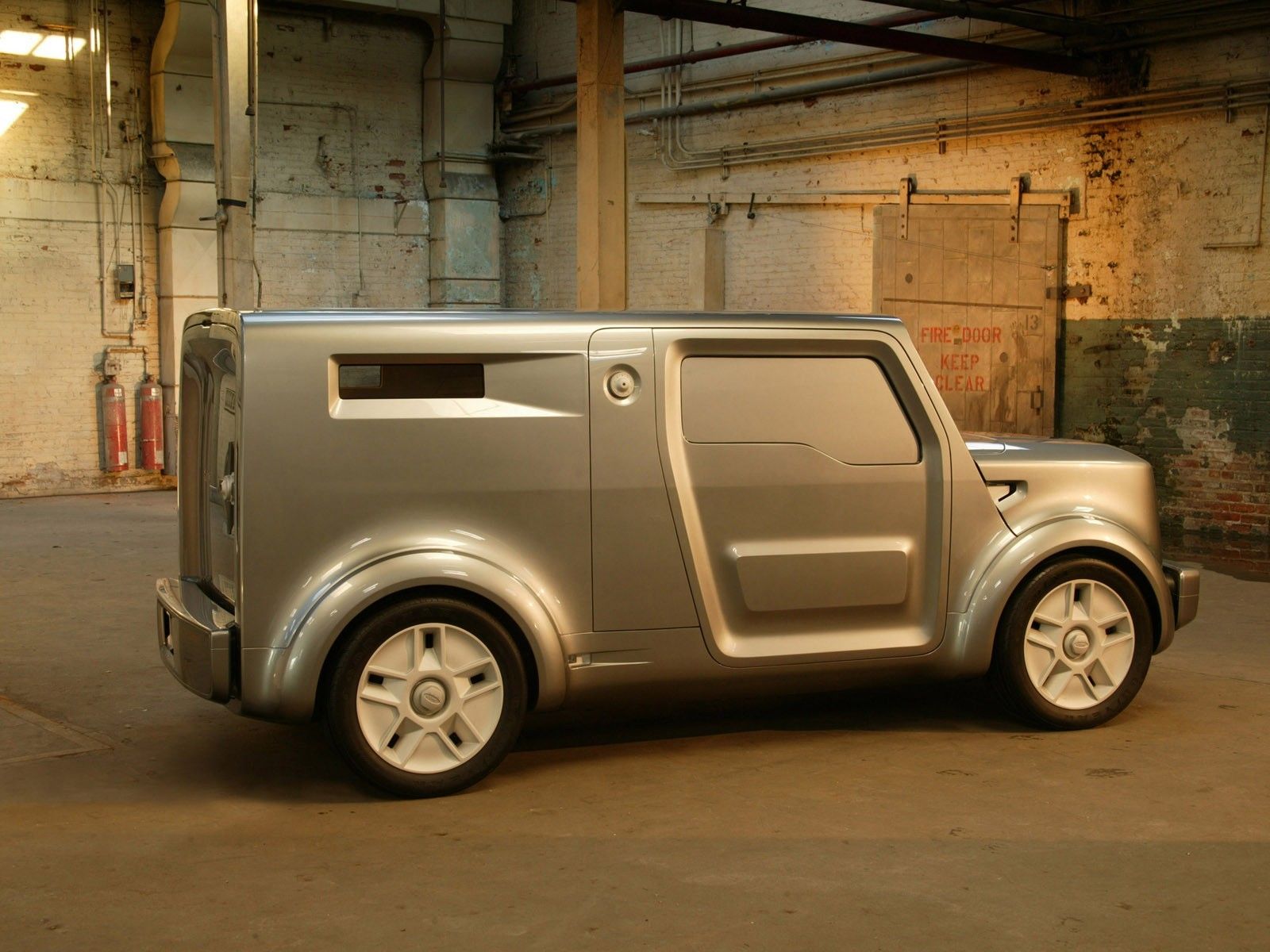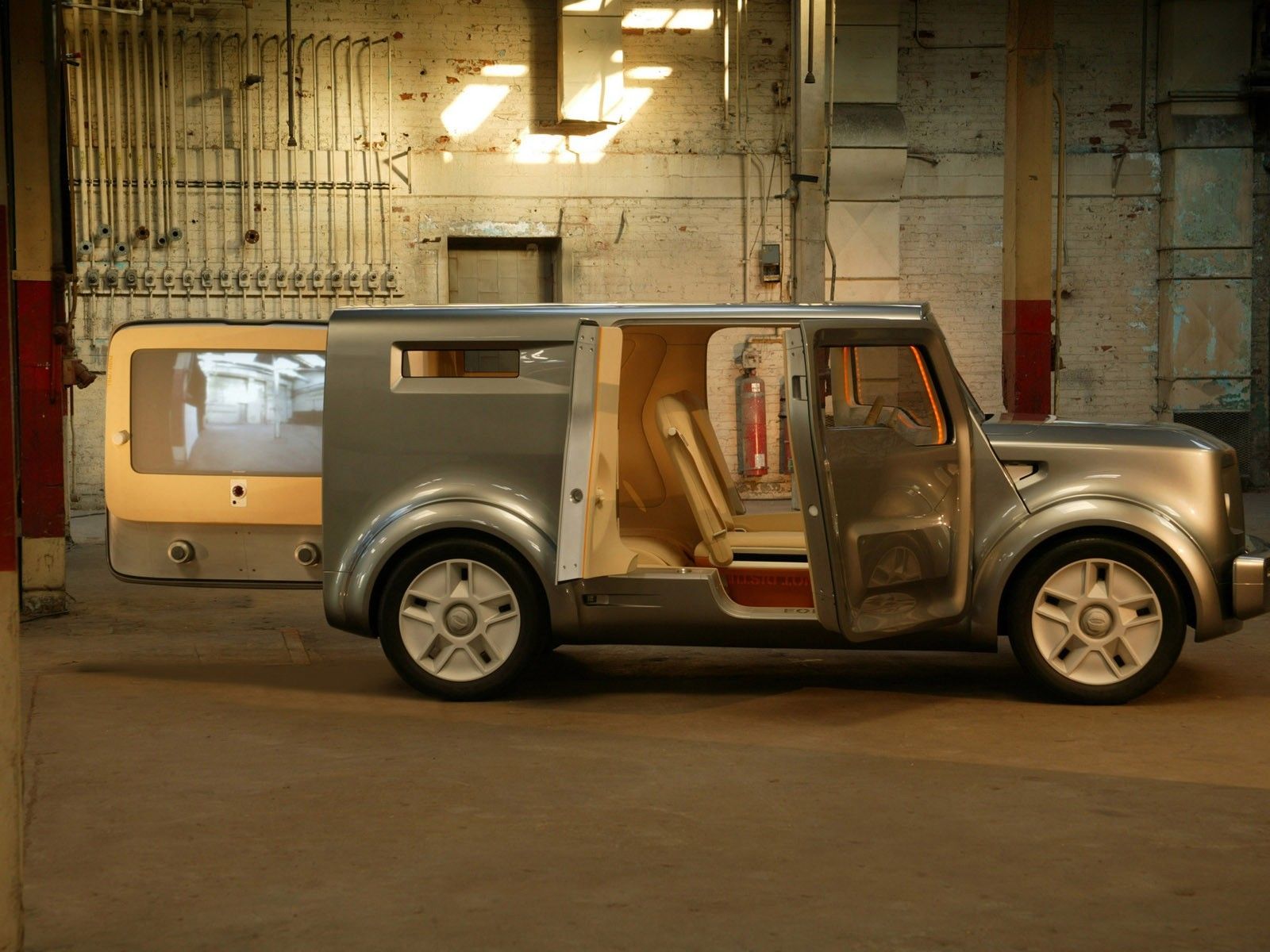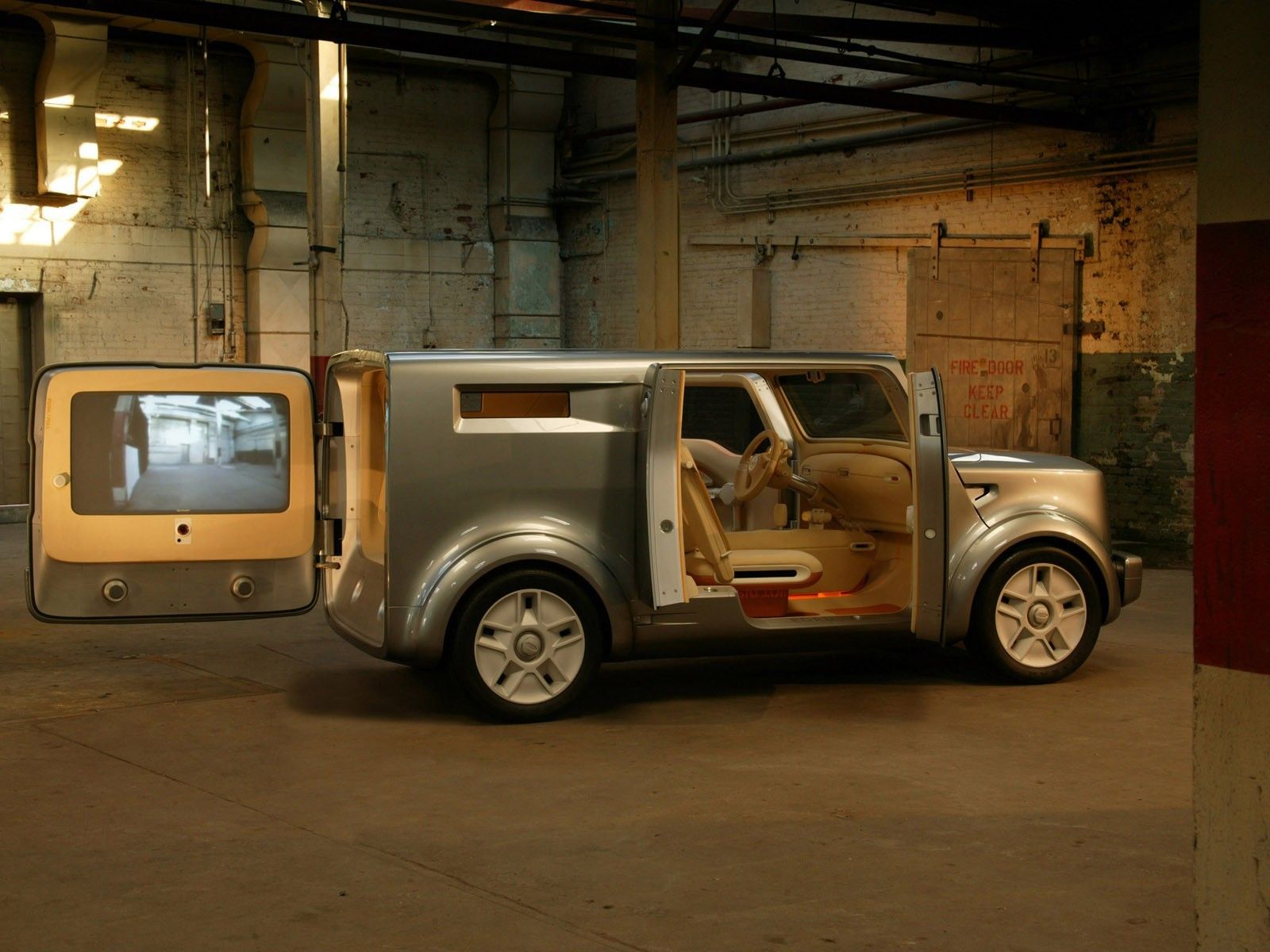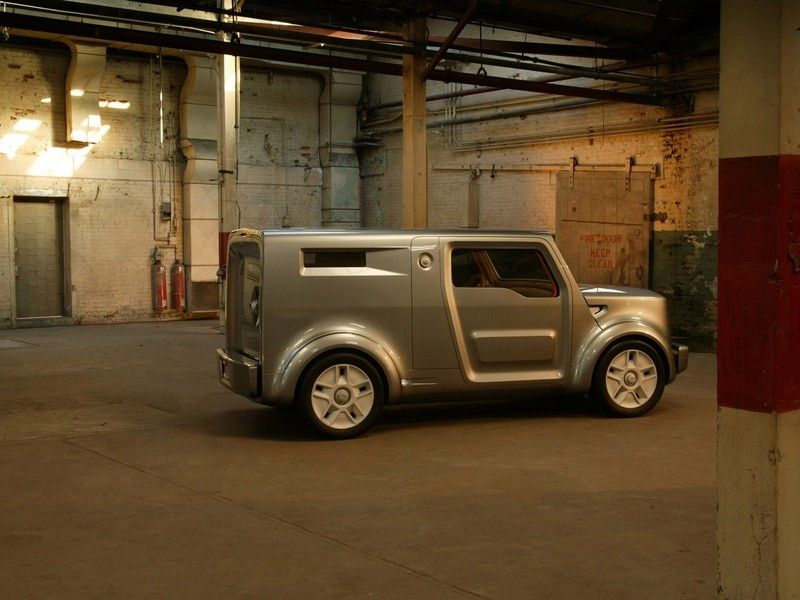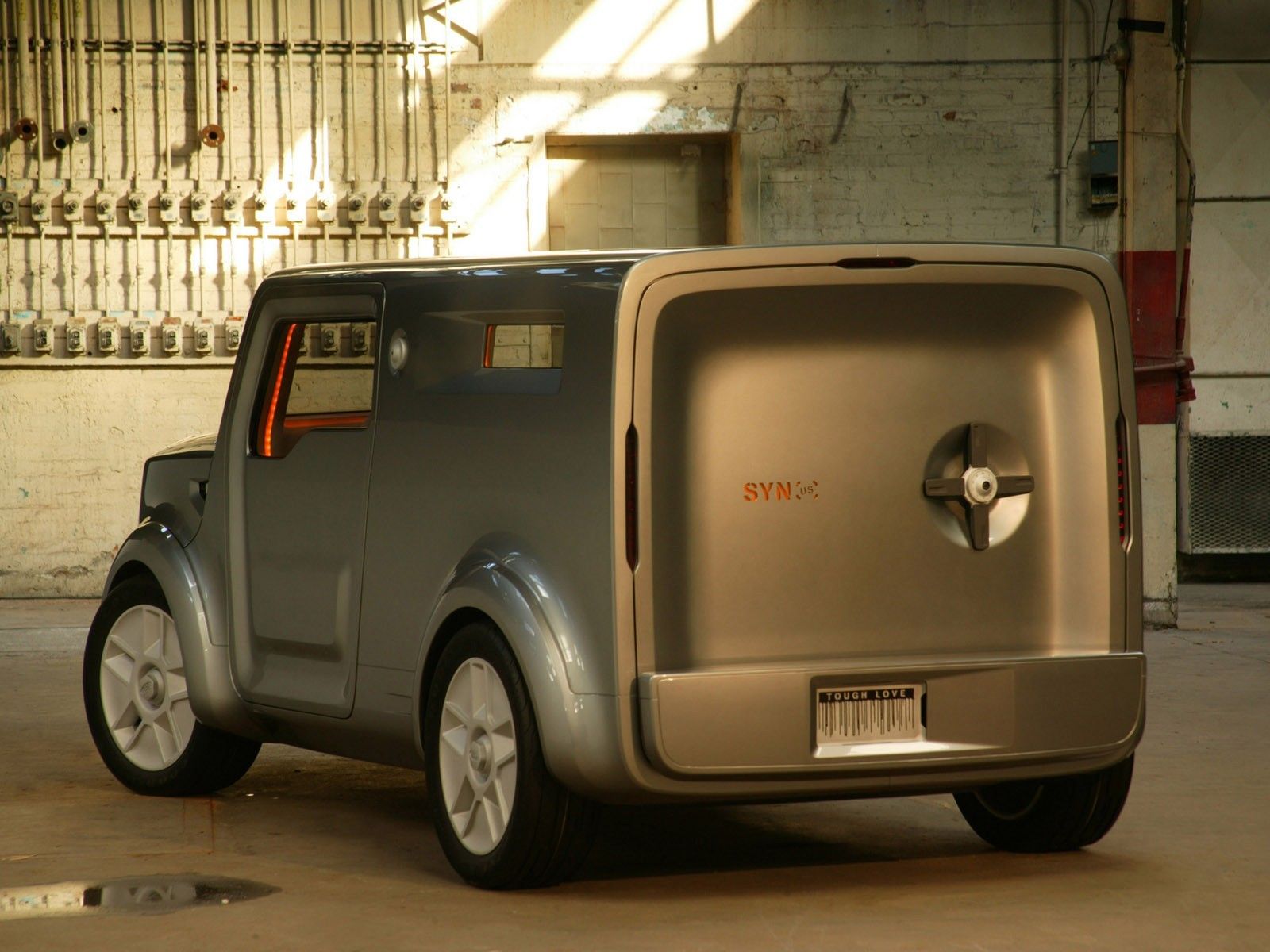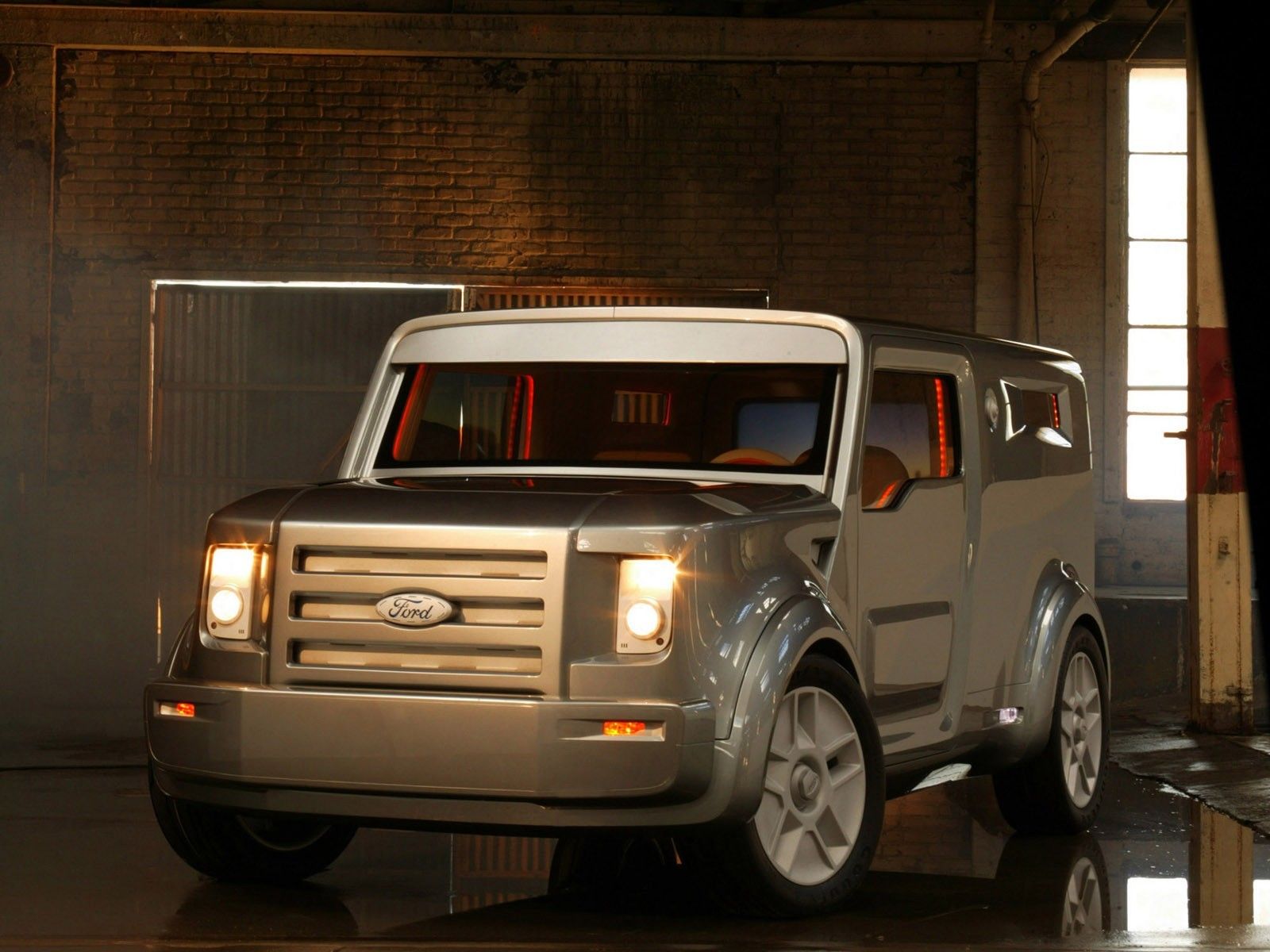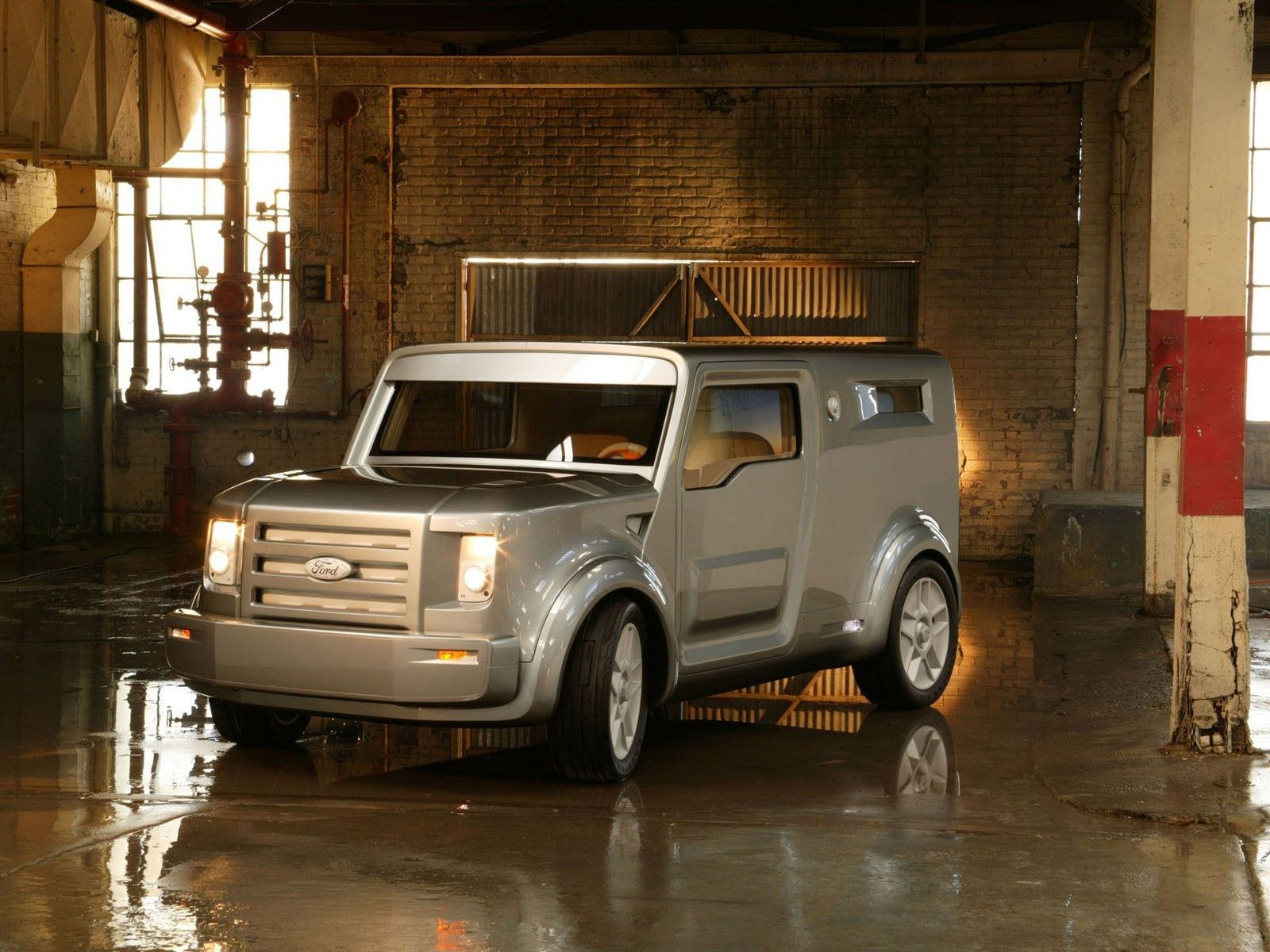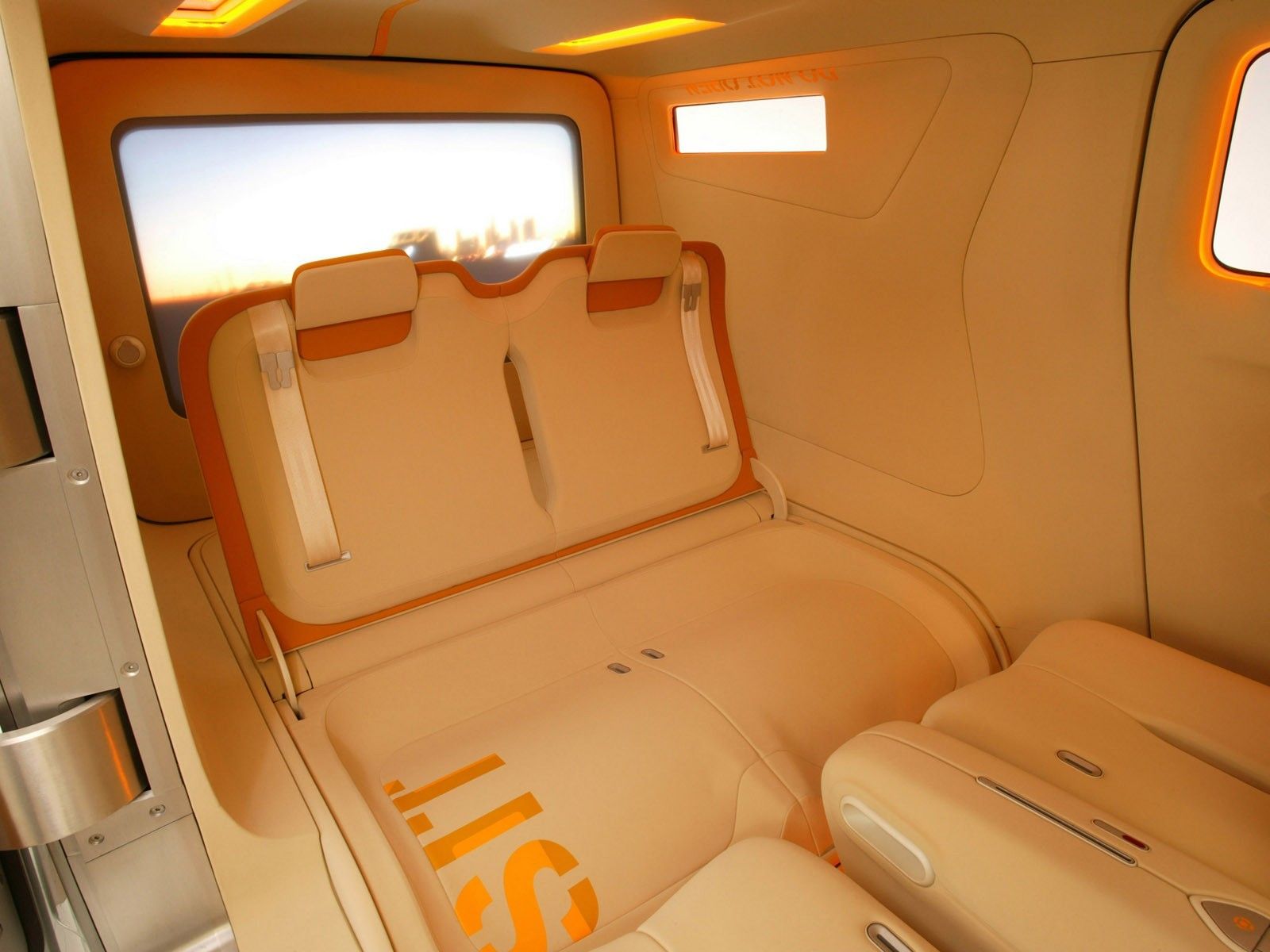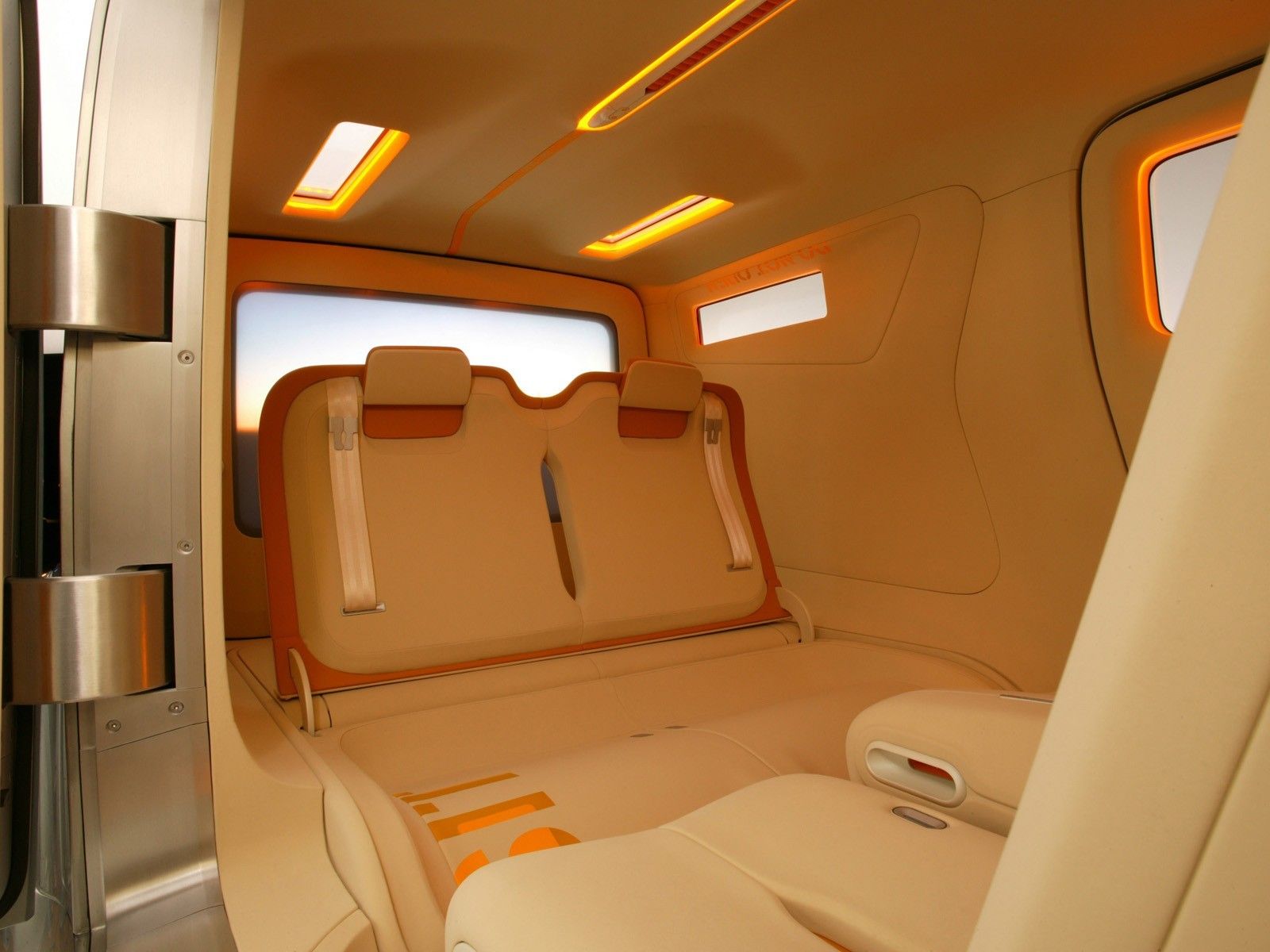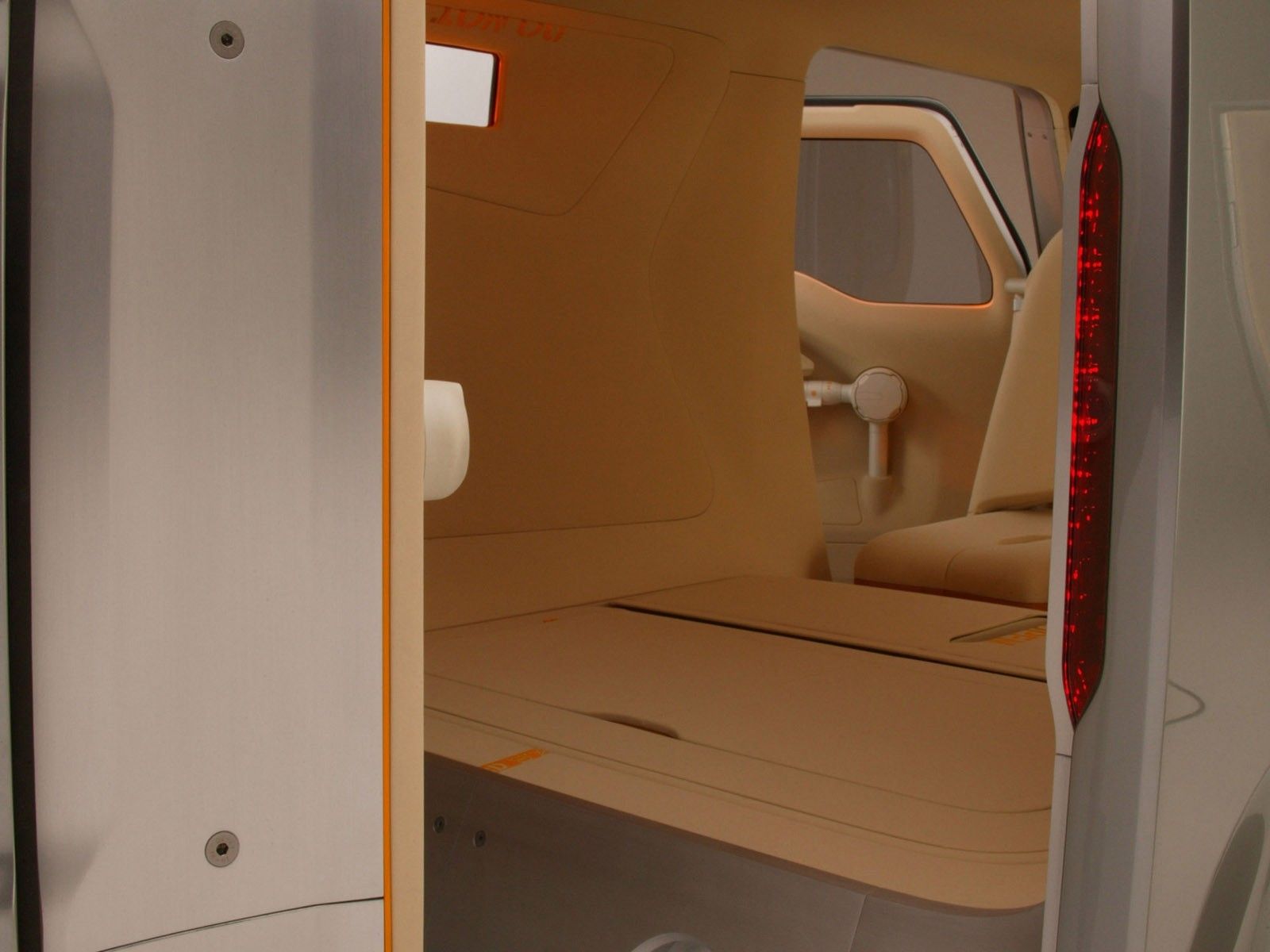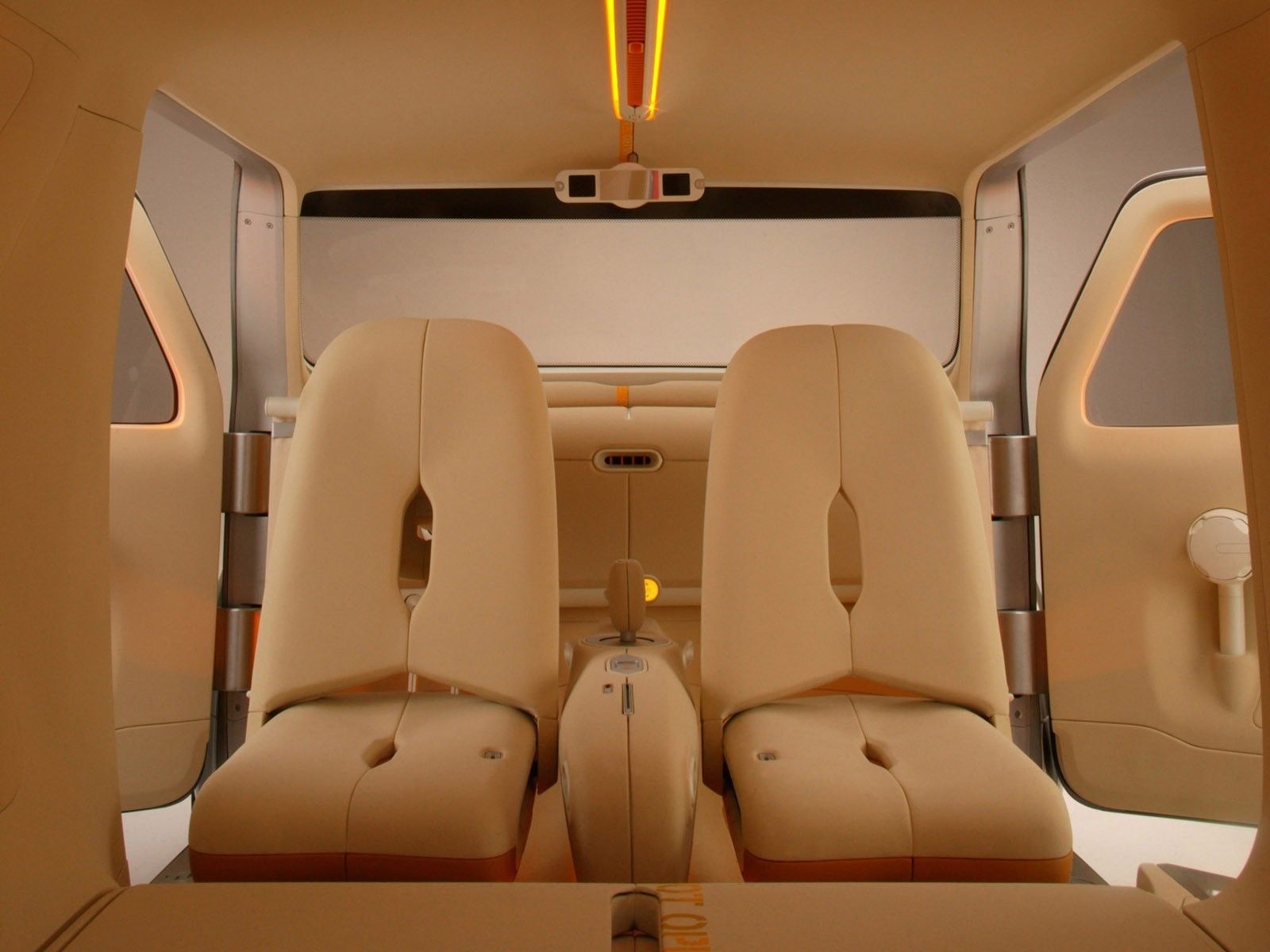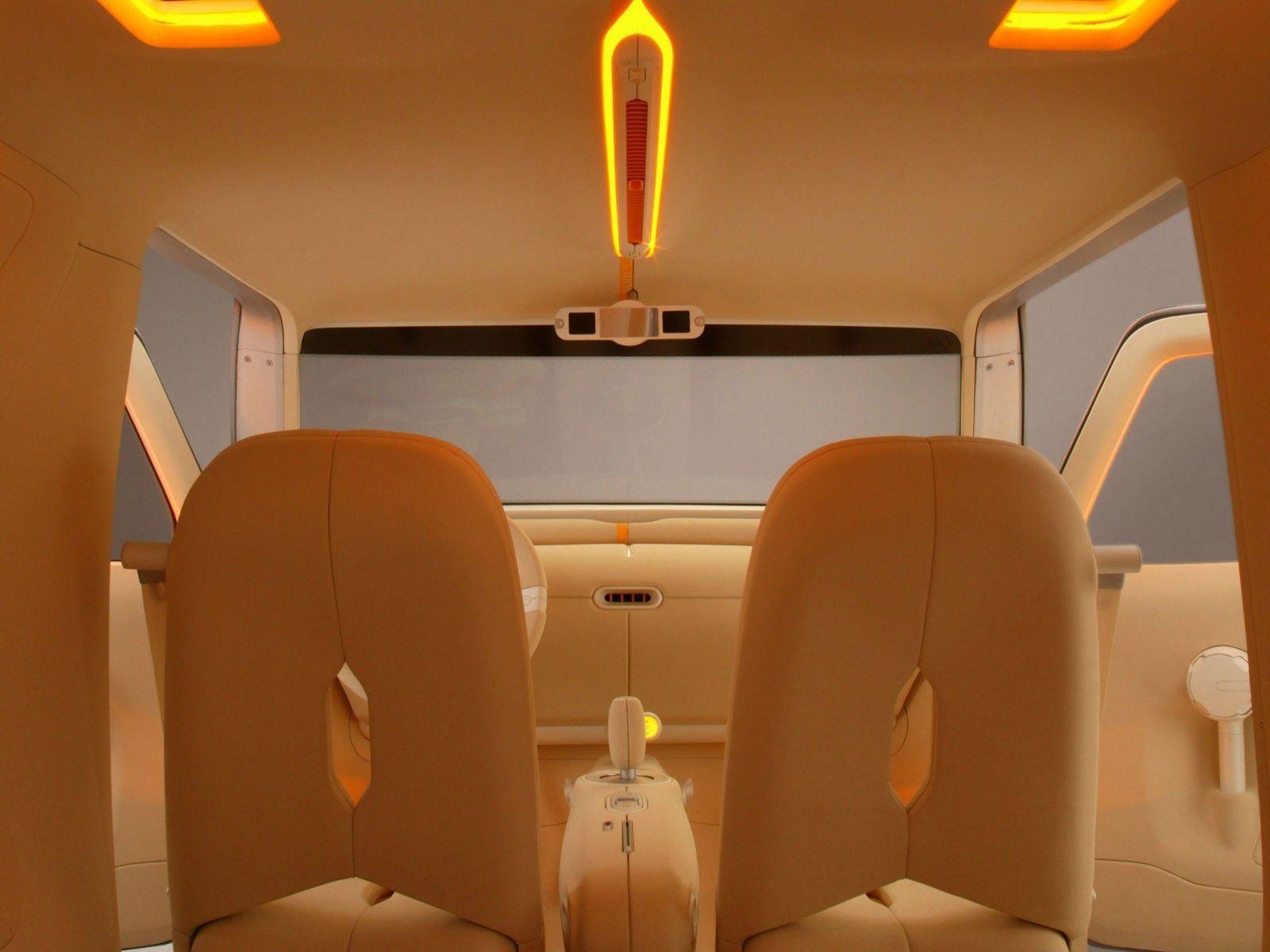Americans may be restless, but they are not rootless. They always know where they are going. A century ago, population was moving from the farm to the city. Fifty years ago, the shift was to the suburbs. Today, the trend is back to big cities.
The Ford SYNUS concept is aimed at those taking part in this shift. It is compact enough to maneuver through congested streets yet bold enough to run with the big dogs at the same time.
2005 Ford SYNUS
- Make: Array
- Model: 2005 Ford SYNUS
- Horsepower: 134@0
- Transmission: 5-speed manual
THE B's HAVE IT
The architecture of the Ford SYNUS comes from the critically acclaimed Ford Fiesta. Smaller than the Ford Focus, Fiesta is what is known as a B-car. Popular in other markets because of narrow streets and dense traffic, B-cars are almost unknown in America. However, considering that the majority of the world's population will live in urban areas by 2010, the time may finally be at hand for the B-car market in the United States.
The SYNUS concept explores what such a car might look like.
While SYNUS may be small, it has been designed to stand up to the rough and tumble of life in the big city. More than that, it has been given a look that says it can stand up for itself.
Taking its inspiration from bank vaults and armored cars, this concept's exterior design immediately communicates that it takes security seriously. When parked and placed in secure mode, SYNUS deploys protective shutters over the windshield and side glass. Small windows on the flanks and roof are non-opening and bullet-resistant. The rear hatch has no window at all.
The SYNUS concept also signals security through its use of a driver-side dial operated combination lock on the B-pillar. The rear hatch is operated via a vault-style four-spoke spinner. Flat glass in a slightly raked windshield furthers the armored-car look of this concept.
Bold wheel arches make a design statement as well as accommodate the vehicle's exceptionally wide track.
INVITING INSIDE
Chief designer Joe Baker conceived the interior of the concept as a warm, welcoming private sanctuary in contrast to the cold, perhaps cruel, world outside the car. Innovative front seats are identically shaped and padded on both the front and rear faces. Each seatback can slide from back to front, allowing one or both of the front seat occupants to face rearward.
This arrangement could turn the SYNUS into a conversation pit, allowing for personal interaction between front and rear occupants. While the rear seat can accommodate two passengers, it also can fold flat to become a cargo area.
Colors, shapes and materials throughout the inside of the concept also were chosen to emphasize the sense of warmth and welcome. And to make the interior even more accommodating and spacious, the steering wheel folds away under the dash. The instrument panel is similarly user-friendly. A model of ergonomic efficiency, it incorporates easy-to-read gauges and intuitive controls.
Perhaps the SYNUS concept's most eye-popping feature is a gigantic widescreen liquid crystal display in the tailgate. The largest flat screen LCD ever mounted in a vehicle, it offers a choice of Internet surfing, movie viewing, or, via, cameras, watching what's going on outside the vehicle. In motion, the display works with the cameras to function as the vehicle's rear window: by looking in the rearview mirror the driver can sees a high-definition closed-circuit image of the rearward view.
EFFICIENT, RESPONSIVE, FUN
The powertrain of the SYNUS is taken from the Mondeo sedan. The engine is a turbocharged, intercooled 2.0-liter, four-cylinder Duratorq diesel engine with 134 horsepower and a whopping 236 foot-pounds of torque.
In the interest of fuel economy, the diesel is compatible with bio-mass diesel fuel. This mix features 80 percent traditional petroleum-based diesel mixed with 20 percent bio-mass diesel. Bio-mass diesel is a non-toxic biodegradable diesel fuel made from biological sources, such as agricultural products and even recycled restaurant grease.
The concept shares the fun-to-drive Fiesta's MacPherson strut front suspension and semi-independent torsion-beam rear suspension for nimble, confident handling. For increased cornering grip – not to mention style – the SYNUS concept features a wider stance than the production car, and 18-inch alloy wheels wrapped in P225/50-18 performance tires.
CHASSIS
Beneath its decidedly American skin, the Ford SYNUS concept rides on an architecture borrowed from the acclaimed Ford Fiesta, including sport-tuned MacPherson struts up front and a compact, semi-independent torsion-beam rear end, which affords the vehicle a low, flat load floor.
For the SYNUS, the Fiesta chassis – revered by enthusiasts for its composure and quick reflexes – benefits from a widened track, front and rear, giving the concept its bulldog stance and minimizing space-consuming wheel-well intrusion into the passenger compartment. The vehicle sports 18-inch alloy wheels with a strong, uncomplicated five-spoke design, is shod with wide, P225/50-series performance tires.
POWERTRAIN
Diesel engines are known for long-range driving economies, but they are also an excellent fit for urban dwellers. The SYNUS is motivated by Ford's 2.0-liter 16-valve Duratorq TDCi diesel engine, which drives the front wheels through a five-speed manual transmission and is calibrated to run on a 20 percent mixture of bio-mass diesel fuel. Bio-mass diesel is formulated by mixing a blend of diesel derived from renewable, organic sources with traditional, petroleum based diesel.
Bio-mass is a clean-burning alternative to fossil-derived petroleum products. It can be used in compression-ignition (diesel) engines with little or no modifications. Bio-mass is simple to use, biodegradable, nontoxic, and essentially free of sulfur and aromatics. It is less toxic than table salt and biodegrades as fast as sugar. Since it is made in the USA from renewable resources such as soybeans, its use decreases our dependence on fickle oil markets. Ford is a leader in research into alternative powertrains and is the only manufacture actively engages in development of four emerging technologies including gasoline-hybrid, hydrogen internal combustion engines, hydrogen fuel cells, and advanced diesels.
DIESEL GRUNT FOR URBAN LANE CHANGE COMBAT
Getting to the next lane or rounding the corner for that open parking spot requires three things: eyes of a hawk, quick reflexes and a vehicle that can respond as quickly. Unlike some overhead cam engines with torque arriving somewhere near the top of the tachometer, the Duratorq diesel puts the torque right where it's needed, at 1800 rpm. Turbocharged and intercooled diesel employs an advanced common-rail direct-injection system for exceptional efficiency and responsiveness. Sophisticated, electronically controlled injectors are central to the SYN concept's common-rail system. The system delivers fuel at extremely high pressure – up to 20,300 psi (1400 bar) – to the injectors with precision and control that results in greater performance, torque and excellent fuel economy. The engine generates 134 horsepower at 4000 rpm and an ample 236 foot-pounds of torque at only 1800 rpm. This reduces the need to reach down two gears just to merge into midtown traffic.
The new Duratorq TDCi engine is incredibly quiet. Using new Noise Reduction Technology called "accelerometer pilot control", the TDCi engine "listens" to itself to monitor noise levels. By precisely controlling the combustion process, Ford engineers have been able to control the amount of diesel clatter which also contributes to its quiet operation. A ladder frame at the bottom of the engine block improves rigidity and reduces noise and vibration. Duratorq also uses a smaller, lighter and stronger forged steel crankshaft to further lower noise.
The Duratorq represents a quantum leap over traditional diesel engines. It manages to be quiet, clean, and refined, while holding true to diesel's traditional selling points: admirable grunt, modest thirst and low maintenance. As such it is the perfect fit for potential challenges that Ford SYNUS concept drivers could face.
Standing less than five feet tall, SYNUS concept signals that this Ford Fiesta-derived car can hold its own with both the big dogs on the road and whatever punishing conditions it might meet while parked downtown.
Flared fenders, an upright windshield, and a large, milled "FORD" badge establish a Built Ford Tough attitude.
Keyed to its protective posture, the ingenious exterior of the Ford SYNUS concept borrows design cues from two other tough forms – bank vaults and armored cars – right down to the big four-handle spinner that opens the windowless rear hatch.
While engaged in secure mode, the vehicle deploys protective shutters over the windshield and side glass. Small windows on the side and roof are non-opening and bullet-resistant.
Adding to the car's protective theme, the driver's door on the Ford SYNUS concept is unlocked via a safe-style combination dial on the B-pillar. Its door glass borrows the trademark shape from Ford's mighty F-Series pickups, and small, slot-style windows are set high on the rear flanks. These non-opening panes of bullet-resistant glass – deeply recessed to bolster the body's impression of thickness and impenetrability – are replicated on the roof as a pair of skylight panels, allowing natural light into the cabin without compromising security. The passenger side boasts a supplemental rear-hinged access door, similar to what is found on an extended-cab pickup, to ease rear-seat ingress and egress.
VISUAL CUES AND FAMILY RESEMBLANCE
Inspired by Ford's current range of rough-and-ready trucks and sport-utility vehicles, Designer José Paris has neatly integrated the big, bad attitude of its Built Ford Tough relatives in this diminutive urban sanctuary's wrapping.
A milled, block-lettered "FORD" badge – larger than those found on the F-Series trucks – is backlit in electric blue, hinting at the sanctuary within. Meanwhile, simple rectangular headlamps that feature stacked halogen elements and a floating front bumper perfectly complete the confident neo-classical look. Boldly flared wheel arches at the front and rear accommodate the vehicle's exceptionally wide track, a clear statement that the SYNUS concept is every bit as nimble and fun to drive as its acclaimed European-market foundation, the Ford Fiesta.
The just-slightly raked, completely flat windshield is wide, low and set between two chunky A-pillars and beneath a substantial header – another visual element that helps give the little Ford SYNUS concept its armored vehicle character. A very fine centerline crease runs the length of the roof, a cue that is neatly reiterated in the vehicle's interior.
PRIVACY AND SECURITY DELIVERED TO A NEW LEVEL
Because the SYNUS concept's native habitat, the urban environment, can be inhospitable at times, the door glass and the windshield come equipped with deployable armor. These steel shutters are simple but effective security measures that help deter vandalism, and prevent smash-and-grab thievery. With the shutters in place, the Ford SYNUS concept can meet the challenge of overnight curbside parking with confidence.
Steel shutters cover the windshield and front windows, while the rear side windows are made of bullet-resistant glass.
The shutters also afford privacy and security when occupants choose to kick back and take advantage of the vehicle's array of communications and entertainment technology.
Key amenities include an onboard 802.11g wireless network hub and eye-popping 45-inch flat screen LCD from Sharp Electronics which fills the rear tailgate. This gigantic display can accommodate a variety of technologies, including DVD players, the internet, and video game systems. Moreover, a series of external cameras linked to the display allow occupants to monitor activities on the street – even with the security shutters in place. One such camera is housed in the four-handle spinner on the rear door, which has a single hinge and opens like a bank vault. The rear door is windowless with a convincingly impenetrable appearance. Stencil-style Ford SYNUS concept logo garnishes the smooth, slightly concave surface. Sliver-like taillights and a center high-mounted stop light that feature potent LED elements also emerge from within the fine gap between the rear door and the body.
The rear hatch is six inches thick, and features beveled edges like a bank vault.Swing this door open and the Ford SYNUS concept reveals more brilliant, vault-inspired detailing. The six-inch thick door's inner edges are broadly beveled like a safe's, nestling into the body's similarly mitered frame. Both surfaces are finished in solid milled aluminum. A trio of substantial bars dominates the body's bottom edge. Recalling a vault door's retractable locking bolts, they actually serve as shock mounts for the floating rear bumper, which swings aside with the access door.
"This isn't just the car you drive to the club or your friend's pad; this becomes the club or the pad – the tech-savvy place to hang out, especially in the city." – Joe Baker, Chief Designer
Striving for a design that exudes the warmth and welcome of a private sanctuary, Chief Designer Joe Baker has conceived and crafted a space that not only calms the spirit but eases the stress of urban life.
The Naugahyde front seats feature seatbacks that slide forward, creating rear-facing seating for tailgating or socializing.
Side panels are covered in memory foam that conforms to body parts.The Ford SYNUS concept features innovative front seats with articulated seatbacks that are identically shaped and padded on both the front and rear faces. Instead of using a traditional fixed pivot, each seatback is mounted on rails along the sides of the bottom cushion. This allows each seatback slide from back to front, allowing one or both of the front seat occupants to face rearward. This feature helps bring together front and rear occupants for socializing, or allows front occupants to take full advantage of the entertainment systems found on the SYNUS concept.
Power adjustment controls are centrally located on the underside of the seat, and the whole unit rides on a single floor track, yet another innovation that maximizes space. The rear seats can accommodate two passengers in comfort, or fold completely flat to increase interior volume.
Color and fabric selection have as much to do with the cabin's welcoming atmosphere as do its soothing shapes and intelligent ergonomics. The seats, headliner, and side panels are swathed in a smooth, elastic fabric that lacks a noticeable grain or texture. Its soft, skin-like physical properties and off-white tones help make occupants feel one with the interior.
Secondary surfaces, including the underside of the front seat and the lower portion of the instrument panel, are clad in vintage-style Naugahyde in a warm, complementary shade dubbed "yield yellow" by the design team, for its similarity to colors used in road signage – another nod to the vehicle's urban intention.
In addition to the soft-touch fabrics, the side panels behind the front seats are layered in supremely supple "memory foam," that seemingly hugs body parts, makes the rear compartment as hospitable as the front, and promotes this area as more than just added cargo space.
Likewise, the Ford SYNUS concept's instrument panel is a model of ergonomic efficiency, incorporating easy-to-read, amber-lit gauges and user-friendly controls. The steering wheel folds away beneath the dash – offering additional sanctuary space behind the concept's fortress-like exterior. The passenger compartment's understated LED lighting also changes moods as the occupants see fit, easing from cool white to warm amber.
TAGS AND INSTRUCTIONS FOR STYLE AND FUNCTION
Color and materials designer Elizabeth Salonen has accented the passenger compartment with strips of faux "selvage." (Interestingly, selvage is most appropriate for this security themed concept in another sense. One meaning of the word is "the edge plate of a lock that has a slot for a bolt".) These cut-off-and-throw-away edges on lengths of fabric often note such mundane information as fiber content and care instructions. However, Salonen believed that exposed lines of selvage – custom-made with clever, SYNUS-inspired descriptions – would highlight the handcraftsmanship in the interior fitments.
One such line runs the length of the headliner, elegantly paralleling the centerline crease on the roof panel. Salonen also included a few stencil graffiti-style "instructions," like "feet" placed on the floor mats. In addition, designers highlighted phrases that playfully caution against doing the very thing the part is designed to do.
"Very often people do the exact opposite of what they're told," Salonen said. "In this case, we knew they would lift the back sides of the rear seats so we stenciled 'DO NOT OPEN' on the panels."
STAY INSIDE, SEE IT ALL – THE ULTIMATE IN VOYEURISM
Perhaps the SYNUS concept's most eye-popping feature is a gigantic widescreen liquid crystal display that's built into the vehicle's tailgate.
When engaged, the Sharp Electronics television– the largest flat screen LCD ever mounted in any vehicle – offers viewers inside the vehicle the choice of internet surfing, people watching, or movie viewing.
Measuring fully 45-inches on the diagonal, this mammoth television is derived from Sharp's new Aquos LC-45GX6U high-definition technology and displays a true 16:9 aspect ratio and full HDTV resolution of 1920 x 1080 pixels. It's completely plug-and-play ready, allowing for quick hookups to the viewer's favorite gadgets, as well as three unique usage modes.
In Observation mode, for instance, tiny external cameras allow occupants to watch activity on the street outside, even when the vehicle's roll-up security shutters are sealed. In motion, the display works with the cameras to function as the vehicle's rear window; the driver, looking in the rearview mirror, actually sees a high-definition closed-circuit image of the rearward view. Think of it as a virtual rear window.
In Generate mode, the screen serves as a vast electronic desktop, acting in tandem with the vehicle's integrated 802.11g Wi-Fi wireless network system and PC controller. In this mode, users can surf the Web, manage digital music files, or create and edit images and video while the vehicle is parked.
Finally, in Entertain mode, the television display becomes the ultimate mobile home theater and arcade, with the ability to interface with DVD and VHS players and video game systems. When the display is in this mode, sliding the front backrests forward creates the best seats in the house.
The rising cost of gasoline once more has Americans considering the advantage of buying a vehicle powered by a diesel engine. Small cars are generally lighter than large cars. Thus smaller cars can get by with smaller, less thirsty engines.
A move to more fuel-efficient vehicles such as the SYNUS concept would not only payoff in the pocketbook, it would also pay off for the environment. That's because burning less fuel produces less pollution.
TURBO POWER, DIESEL EFFICIENCY
Diesel-powered cars once were known for poor acceleration. No more, thanks to turbocharged diesels such as the 2.0-liter Duratorq used in the SYNUS. It produces 134 horsepower and a very generous 236 foot-pounds of torque. A turbocharged engine can deliver more power and better fuel economy. That's because a turbocharger only generated its extra power when the driver calls for it. The rest of the time the turbocharger is idle and the engine produces less power and consumes less fuel.
BIO BENEFITS
The SYNUS concept is suited to bio-mass diesel fuel. Twenty percent of every gallon of this blend is bio-mass diesel; the other 80 percent is traditional petroleum-based diesel fuel. Non-toxic and biodegradable, bio-mass diesel is made from such things as agricultural products and even recycled restaurant grease. Unlike oil, these sources are readily renewable.
Not only would reliance on bio-mass reduce the need for petroleum, that reduced need would eliminate or delay the need to extract petroleum from areas with fragile ecosystems.
BIG ADVANTAGES TO BEING SMALL
In most if not all dimensions, the SYNUS and the Fiesta on which it is based are smaller than the Ford Focus familiar to Americans. Being smaller, they are also lighter and offer less resistance to the wind when under way (theoretically in the case of the concept car). Thus these cars can make do with smaller, more fuel efficient engines.
Another advantage for the environment lies in the small size of B-cars: it takes less material to make them. That means less natural resources are consumed. And that means less of the natural environment needs to be disturbed to extract those resources.
SYNUS DRAWS URBAN CUES FROM GRAFFITI ARTISANS
There's graffiti – and then there's graffiti.
Rising up from urban centers worldwide, the popular stencil graffiti movement has left its mark on the all-new Ford SYNUS concept.
Ford designers have integrated the vibrant, urban art form into the car's interior and exterior as an expression of the car's distinctive city vibe.
The art form – seen of the streets of London, Madrid, Los Angeles, and Paris – has quickly evolved from spray can expressionism to a respected art medium, showing up in museums and exhibits.
But unlike traditional urban graffiti – which often centers on a colorful tribute to the "tagger" or graffiti artist – stencil graffiti is about ideological expressions.
"Stencil graffiti when it's done right, really is about expressing the message, not about gaining fame," says Designer José Paris who created the Ford SYNUS concepts exterior cues. "A lot of times stencil graffiti is political in nature, but often it is done in fun, sort of tongue-in-cheek."
To that end, designers drew exterior inspiration from popular stencil artists worldwide and gave the concept distinct details from the vehicle's badging to its "Tough Love" license plate.
Inside, Chief Designer Joe Baker and Color and Materials Designer Elizabeth Salonen also applied the art form in whimsical fashion, utilizing stencil-like type in the car's instrument panel and upholstery.
On the car's floor mats, for example, they inscribed "Feet"; on the rear seat, "Sit"; and on the tailgate and gearshift "Push/Pull." Material care symbols and a "79 cents/yard," stencil also wrap the vehicle's centerline, poking fun at traditional selvage labels.
But one of the designers' favorite uses of stencil graffiti, in fact, was a decision to also stencil other messages meant to both tempt and amuse occupants.
"Do Not Disturb" graffiti can be found stenciled inside the SYNUS' rear compartment and other hidden areas, such as under headrests. "Do Not Open" and "Do Not Touch" warnings similarly adorn features such as seat backs, armrests and door handles.
"People always do what you tell them not to, hence "Do Not Sit" on the seat, and "Do Not Open" where the seats recline," Salonen said. "We wanted our messages to be more tongue-in-cheek, to be amusing and to draw people into the car to take a closer look."
Designers also wanted to reinforce the two themes of the car – contrasting the interior's soft side with the exterior's hardness.
"Stencil graffiti is meant to draw you in and unlike traditional graffiti is often small in scale, so it relates to the SYNUS really well," Paris said. "In this case, we're using it as a connection to the urban and youthful feel of the vehicle. It's relevant because this is a car for the urban environment."
FORD SYNUS FLAT PANEL LARGEST EVER WEDGED INTO NEW VEHICLE
At 45 inches, The SYNUS concept's flat panel LCD is the largest ever wedged into a vehicle.
Designers were so convinced that Sharp Electronic Corp.'s television goes to the heart of the "urban sanctuary" concept, they ditched the rear window to make room for it.
One look at the Aquos® Liquid Crystal television and it's easy to forget you're in a car.
Whether parked outside the stadium for the ultimate tailgate experience, or privately huddled inside to surf the internet, watch home movies – or even your surroundings via the concept's integrated security cameras – Sharp's Aquos® High Definition television has you covered.
Sharp's unique Advanced Super View/Black TFT panel not only boasts unprecedented resolution (1920x1080 pixels), but outdoor viewing is not hampered as the panel is resistant to reflected glare typically experienced with other flat panel designs. The technology is so advanced, in fact, it earned Sharp the 2004 Emmy Award for Technology and Engineering.
The Sharp LC-45GX6U also is completely "plug and play" ready, so hookup to any HDTV-capable Cable TV-system, or Ford SYNUS concept's Wi-Fi components is a snap. A fully integrated HDTV tuner and CableCARD™ compatibility also is built in, so there's no need for a separate cable box.
Additionally, the LC-TV boasts: a separate AVC System that houses all terminal connections; a PC Card slot which allows you to insert your digital media cards and view still images, and an exceptional image response time of less than 12 ms.
All of these technologies allow you to pull over, settle back and either watch your favorite show, passersby, or surf the net.

